





West Parley West Parley
Both Centres are open as usual on Bank Holidays. West Parley closed Easter Sunday









Both Centres are open as usual on Bank Holidays. West Parley closed Easter Sunday


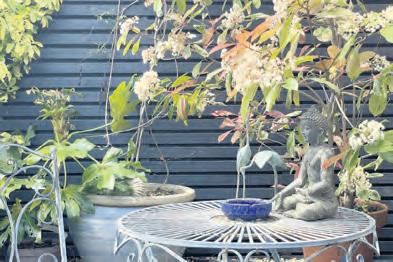
A quirky, very unusual garden in Poole is a new opening for the National Garden Scheme on Sunday 18th August.
1C RECTORY ROAD, Poole, Dorset, BH15 3BH is quirky in both the character house and garden. With a passion for maximalist design the house and garden has been designed and built by the owner over the last five years. Both the garden and house are full of objet d’art spanning centuries, with decorative antiques

“The first week of August hangs at the very top of summer, the top of the live long year, like the highest seat of a Ferris wheel when it pauses in its turning.”
- Natalie Babbitt
and interior design interspersed with tropical plants, so there are curiosities to see in every corner.
Open from 11am until 5pm, light refreshments will be available. Admission is £4, for children £2. The garden is not suitable for wheelchair access and dogs not allowed.
In complete contrast, the garden at BROOK VIEW CARE HOME Riverside Road, West Moors, Ferndown, Dorset, BH22 0LQ opens for the NGS on Saturday 17th and Sunday 18th August, from 11am until 4.30pm both days.
The colourful, vibrant garden is spread over two main areas, one warm and sunny, the other cooler and shadier, with a lovely pond area, games lawn and mixed borders, greenhouse, and further gardens and raised beds, in a courtyard setting. Residents help out with the production of many of the plants, all expertly managed by the gardener.
Admission is £3.50, children free, with homemade teas available, plants for sale, a raffle and bookstall. Dogs on leads are allowed and there’s wheelchair access.
One of Dorset’s traditional and popular festivals takes place on Saturday 3rd and Sunday 4th August when the Great Dorset Chilli Festival arrives at the Stock Gaylard Estate in Sturminster Newton. It’s not just for chilli lovers. There’s artisan food, drink and crafts plus live music, children’s entertainment, falconry displays , cooking demonstrations and in all over 110 trade stands.
Stock Gaylard Estate , Sturminster Newton DT10 2BG
There’s a new look and date for the Uplyme & Lyme Regis Horticultural Society Flower and Produce Show on Saturday, 3rd August at the Uplyme Village Hall and Playing Fields Admission £1 and the theme for this year’s even is herbs. Open from 2pm to 5pm.
There’s good news for Dorset homeowners who want to try composting.
Dorset Council has a special offer on compost bins. One 220-litre compost bin will cost £10 and you can buy a second at half price. There is a delivery charge of £6.99 and you can buy up to four bins in total, so perhaps you could join forces with a neighbour, friend or relative?
The council also offers up to two compost bins and two collection caddies for free to all Dorset schools.
For more details on both offers, visit dorsetcouncil.gov.uk/recycle.
Composting is a natural way of recycling garden waste, as well as fruit and vegetable peelings, tea bags and coffee grounds.
In order to get the best result, it needs a mix of two distinct materials:
GREEN MATERIALS - are high in nitrogen and rot down very quickly. Examples include grass clippings, nettles, fruit and vegetable peelings, tea bags/leaves, coffee grounds.
If left, green materials will rot into a slimy, smelly mess. Hence it is essential to mix them with browns to provide structure and airflow
BROWN MATERIALS - are high in carbon and will take a long time to compost on their own. Examples include hedge cuttings, twigs and sticks, shredded paper, newspaper, empty toilet and kitchen rolls, cereal boxes and egg boxes
If left alone these materials will rot down very slowly. However, if they are mixed with ‘green material’ they rot down much faster.
A good structure is important as it allows the movement of air, which is needed by micro-organisms responsible for turning waste into compost.

New research has revealed which England councils recycle the most, with Dorset taking one of the top spots.
The study by Enviro Homes Renewables studied the latest data for 2022-23 from the Department for Environment, Food & Rural Affairs, which showed the percentage of waste in each council that is sent for reuse, recycling, or composting. It was found that the Dorset council recycles 58.6 of all waste collected was sent for reuse, recycling, or composting in the 2022-23 period, with around 340.1 kilograms of household waste collected per person.

One of the southwest’s highest profile horticultural two days takes place as Taunton Flower Show welcoming everyone to Vivary Park on Friday 2nd and Saturday 3rd August and there is something for everyone with arena acts, music and an abundance of trading and catering stalls with the emphasis very much on horticulture.
Founded in 1831, this will be the 192nd Taunton Flower Show and the charity is upbeat about the plans for this year’s show, despite the challenges of increased contractor costs alongside the cost of Vivary Park and Wilton Lands.
The competition marquee is looking forward to its varied entrants, and is a real community centrepiece with lots of competitors. The floral marquee will be showcasing some excellent traders, with an amazing floral display from Monkton Elm Garden Centre.
Tickets are available in advance from tauntonfs.co.uk
The South Downs show at the Queen Elizabeth Country Park takes place on Saturday, 10th August and Sunday 11th August at the bottom of the famous Butser Hill. It’s another great traditional day out with arena acts, entertainment, country life stalls live music and food and drink. Open 10 am to 5pm on both days.
Queen Elizabeth Country Park, Gravel Hill near Petersfield, Hants PO8 0QE


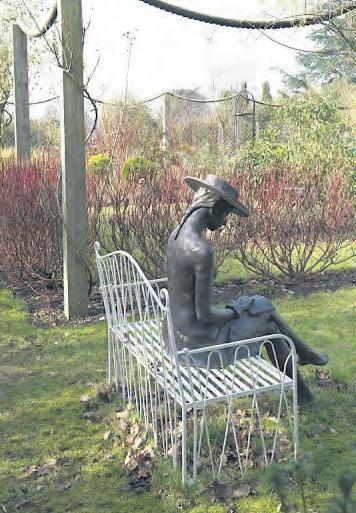
THE DOWN HOUSE at Itchen Abbas, Hampshire, SO21 1AX, with a twoacre garden overlooking the Itchen Valley, opens for the National Garden Scheme on Thursday 1st August from 2pm until 5pm.
The garden is by the Pilgrim’s Way, and has a terrace of agapanthus and succulents, pleached hornbeams, a rope-lined fountain garden, formal box-edged potager, a yew lined avenue and walks in adjoining meadows.
Admission £6, children free, with homemade teas available and wheelchair access. Dogs are not allowed.
BERE MILL, London Road, Whitchurch, Hampshire, RG28 7NH a garden built around an early 18th century mill on an idyllic isolated stretch of the River Test, opens for the National Garden Scheme on Bank Holiday Monday 26th August, from 12pm until 5pm.
The gardens have herbaceous and Mediterranean borders with magnolia, irises, and tree peonies, a traditional orchard and two small arboretums, one specialising in Japanese shrubs and trees. Admission £8, children free, with homemade teas available, plants for sale, wheelchair access, dogs allowed on short leads, visitors can bring picnics and coaches are welcome. Bere Mill also opens for groups for the NGS by arrangement, for more details go to Bere Mill’s entry on the NGS website at www.ngs.org.uk.
Wildlife Photographer of the Year, the world-famous exhibition from the Natural History Museum is returning to Dorset Museum & Art gallery. Over 100 powerful photographs capturing animal behaviour, spectacular species and the beauty of our planet. Wildlife Photographer of the Year is the most prestigious photography event of its kind and the exhibition reflects its status worldwide The exhibition runs throughout the summer and autumn until November 3rd and is open daily from 10am to 5pm.
Dorset Museum and Art Gallery, High West St Dorchester DT1 1XA

Gardeners throughout Dorset are being encouraged to make a small but significant change to their fences before the summer draws to a close. This comes amid concerns over the dwindling hedgehog population in the UK, which experts believe is suffering due to environmental changes and modern gardening practices. These practices influence how we maintain our homes and gardens, impacting local wildlife
Gardeners are advised to welcome these prickly creatures into their outdoor spaces during the warmer months, as hedgehogs serve as natural pest controllers. Fond of feasting on slugs and snails, hedgehogs help keep these common garden pests at bay, protecting our cherished fruit, vegetable plots, and flower beds. Typically spotted in the late summer and early autumn, now is the prime time to make gardens more accessible for hedgehogs, The decline in hedgehog numbers has been linked to the increasing prevalence of solid walls and fences around properties, which hinder their movement and foraging opportunities.
Independant house plant
shop Plantaholics Romsey has expanded with another shop unit just next door called ‘Plantaholics – In the Garden’ offering a range of outside plants and accessories with free friendly advice. They currently have a good selection of plants available with lots of thing still to come. They have started planning to go bigger and better for next year.
The outlet opened in May and the owners have been delighted with the support already received. You can find them on Sandy Lane, Romsey at the old Cedar Nursey site which closed nearly three years ago but hosts a number of successful independent business.
Tel: 07825 210927
Plantaholics in the Garden, Cedar Nursery, Sandy Lane, Romsey SO51 0PD
The Dorset County Show returns on Friday 7th and Saturday 8th September, and again will celebrate rural life in Dorset! This year, the show welcomes new displays including Atkinsons Action Horses, IMPs Motorcycle Display Team, Tomahawk Throwing and Alpaca Competitions!
The family day out is Dorset’s end of harvest celebration as well as a networking event for the agricultural sector. It brings together everything the county has to offer, introducing new acts alongside favourite local headliners with a modern twist.
Atkinsons Action Horses promise is to thrill and astonish with a high energy, breath-taking, stunt show! It will be their first time in Dorset. New to the Woodland Area is have a go (free of charge) tomahawk throwing with Rockley Buddens Activity Centre. James Cox, show organiser, said: ‘At last year’s show, we introduced new attractions and areas, this year we have built on this with more new acts that celebrate Dorset agriculture and countryside but bring unmissable displays to the county!’ While welcoming new additions, the annual traditions remain at the heart with livestock, crafts, delicious food and drink, heavy horses and more! It promises to be the biggest weekend in the Dorset county calendar
For further information and to book yourticket, visit www.dorsetcountyshow.co.uk
Taking place in Brockenhurst in the heart of the New Forest, the New Forest Show is one of the high summer highlights offering 30 acres of showground for visitors. The show brings together livestock and equine competitions local producers and again a strong horticultural theme with show gardens flowers and vegetables. As well as animals there’s countryside traditions and demonstrations. There will be 600 trade stands offering the best of regional crafts, antiques, art food and drink. Tickets are available now on the website.
Brockenhurst, Hampshire. SO42 7QH


Visitors can discover the wonders and delights of the Victorian kitchen garden at NT Kingston Lacy on Wednesday, 7th August with an hour-long tour that shares the history and horticultural significance of just one part of Kingston Lacy’s beautiful gardens.
The event is free but normal admission applies. The tours run from 11am to 12.30pm and then again from 2.30pm to 3.30pm. There is another two tour scheduled for Wednesday, 4th September.
NT Kingston Lacy, Blandford Rd, Wimborne Minster BH21 4EA
Butterfly lovers have a treat in store at the Sir Harold Hillier Gardens on Thursday, 1st August with a butterfly guided walk through the famous Hampshire gardens. Visitors will be able to enjoy a guided walk along the Centenary Borer in the gardens looking at butterflies and the plants that attract these delightful insects. Run in conjunction with The Butterfly Conservation’s Big Butterfly Count and timed to co-incide with the peak of butterfly activity, Dr Andy Barker, a butterfly conservation officer will help with identification from markings so you can record your sightings on an ID sheet. Members price £19.5p per person. Non members £31 including garden admission
Sir Harold Hillier Gardens, Jermyns Lane SO51 0QA
You can control your shrubs and climbers using Rivelin Glen Products uniquely designed Wire Anchors. They are quick and easy to attach to concrete posts (without drilling) to act as an ‘eye’ by threading wire through them to create a trellising system. The Gripple Trellising System is ideal to use with the anchors as the wire does not stretch, takes up to 100kg load and has a life of up to 15 years. Multiple rows can be achieved with one length of wire and two tensioners. No more sore hands or sagging wires! Rivelin Glen Products are the main stockists of the Gripple Trellising System. Prices: Wire Anchors from £10.00 for a pack of three; Gripple Starter Kit - £19.75.

Details available at: www.rivelinglenproducts.com
Email: info@rivelinglenproducts.co.uk or Tel: 01246 462666
Our favourite brew comes from an evergreen shrub which is fun to grow so why not try some homemade and very personalised tea
Tea is our brew of choice and an incredible 165 million cups of tea are drunk every day in the UK. Something magical happens in the process of warming a pot and letting the leaves steep for three and a half minutes. If you are one of those who drinks around three cups a day, why not have a go at growing your own tea?
Can you really grow tea in the UK, though?
Amazingly, the tea plant is easy to grow at home. It all comes down to one plant- Camellia sinensis - the Chinese camellia.
In common with most other camellias it’s easily grown in a pot and prefers an acid soil (if not actually acid, at least lime-free). It’s currently grown commercially in several sites in the UK – including Tregothnan in Cornwall and at The Wee Tea Company in Perthshire. Camellia sinensis is well suited to life in the UK, as it grows above the cloud line in the Himalayas, and can tolerate temperatures down to -10°C (14°F).
The Scottish crop is protected with polythene sheeting when snow is forecast – otherwise the plants are grown unprotected outdoors all year round. If you live in a cold area it is worth growing tea plants in a cold greenhouse or against a south west facing wall. It’s important to remember to never let the plants dry out, and to feed them after their first flush of growth – use an ericaceous or citrus feed. In common with other camellias, early morning sun can cause scorching if it hits frosted growth, so a west/southwest facing spot is ideal.


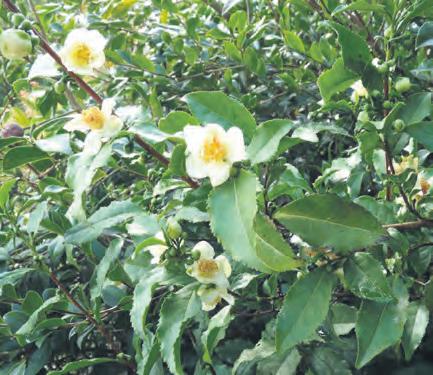
Whilst there are many different types of tea available on the supermarket shelf, most originate from the ‘Tea Plant’, otherwise known as Camellia sinensis.
Camellia sinensis is a hardy evergreen plant boasting glossy green, pointed and fragrant leaves. The appearance of delicate white flowers in the autumn means that this shrub has more to offer than just a refreshing cuppa. If you can grow other varieties of Camellia in your garden chances are you’ll be able to grow Camellia sinensis.
Camellia sinensis likes an ericaceous soil in a bright, sheltered position but with partial shade. The soil should be free draining and so planting in pots is a great option giving even the smallest of gardens the chance to become a domestic tea plantation.
Tea plants can grow to around two metres tall. When planting more than one sapling in the ground, leave a distance of one and a half metres between the plants. This will give room for the plants to breathe and for them to become bushy.
If left unpruned the plant will grow to four metres tall. The trick is once the plant is mature remove just five per-cent of the new leaves at any one time for your brews.
• Harvest the top two leaves and bud from about five percent of stems once the new growth appears on your shrub in spring.
• Steam them for a few minutes to help preserve the colour.
• Roll leaves to rupture the cells and this will help to develop the flavour.
• Allow then to wither and crisp up naturally. For black tea let the rolled leaves oxidise ( a bit like a peeled apple so it turns brown). This a will create a deeper stronger taste.
• Tea was so important to the national psyche that Winston Churchill formulated plans to start growing it in the UK when wartime supplies came under threat from enemy U-boats.
• If it’s not from the Camellia sinensis plant – it is not strictly speaking, tea! Nowadays a lot of what is called tea is actually blends of flowers and herbs – herbal infusions to be accurate.
• Although there are some 2,000 or so varieties of tea, it is not the plant that differs, but the way it is grown, where it is grown and what happens to it after the leaves have been picked.
• It is thought tea was discovered by accident in China as an Emperor allowed some leaves to remain in a pot of boiling water – which in turn created the brew! And that was over 2,000 years ago!
• The average person in the United Kingdom drinks as much tea as 23 Italians.
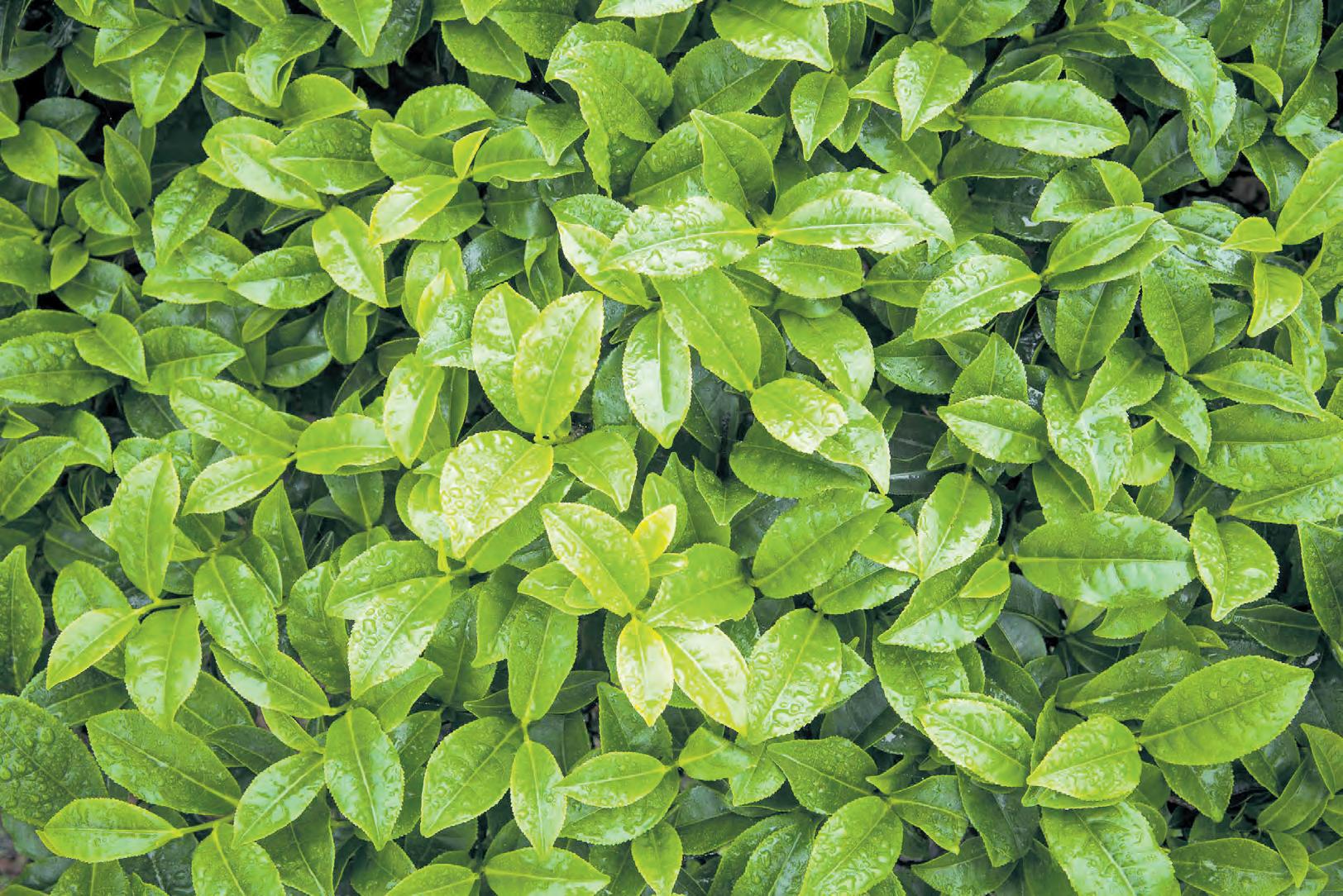
“If you are cold tea will warm you, if you are heated it will cool you. If you are excited it will calm you.”
William Gladstone




















Large Selection of Perennials (Cottage Garden Plants),Trees, Shrubs, Herbs, Alpines and Vegetable Plants. Plus large selection of Ornamental Trees, Fruit Trees and Climbers.
Good range of OUTDOOR POTS - all frost proof VIEW OVER 400 VARIETIES OF






More letters with ideas, views and comments from Country Gardener readers . If you would like to have your say then email editorial@countrygardener.co.uk or write to us at Country Gardener, Mount House, Halse, Taunton TA4 3AD
We should legislate and ban bamboo
I have become increasingly cross about the distress and damage caused by bamboo. Why are the clump forming varieties still being sold? People rightly are concerned about Japanese knotweed but to my mind bamboo is even more invasive and dangerous. I appreciate there are miniature varieties which can be grown in pots but the dangerous clumping variety once established is almost impossible to eradicate. My brother had to employ a big mechanical digger and even now isn’t sure he has cleared it all.
What about suggesting that they should never have been allowed to be sold here in the first place. We the amateur gardeners are at the end of the line.
Alan Trent Torquay

We decided to install ten water butts in the garden last winter. They were all strategically placed on roof down flows on the greenhouse, garage and on three roofs from the house. This summer we have been able to keep our half acre garden blooming thanks to an abundance of rainwater. The effect on our water usage from house taps has been dramatic- down 50 per-cent which just shows how much mains water we were using on the garden. This feels like a significant win all round and I would suggest other gardeners take time out this winter to set up such a system.
Simon Barker Bridgwater
I was pleased to see a reference in your magazine to erodiums. They don’t appear to be particularly well-known plants but deserve to have a bigger audience. I came across these little beauties several years ago and they have been in my garden, pots and troughs ever since. They can be quite difficult to find so I pounce with delight when I see one, I haven’t got. Flower shows seem to be the easiest source. They start blooming in early spring and if you deadhead them regularly go on right through to the autumn.
Annie Evans Hampshire
I understand wormeries are making a comeback. I am not surprised. I run two wormeries which process most of our kitchen waste- tea bags, vegetable peelings, salad trimmings, banana skins and so on. I add chopped up green prunings, used compost, a few leaves, eggshells and torn up egg boxes and newspaper to regulate the moisture.
The worms reward my efforts with dark, crumbly compost at an astonishing rate during the warmer months. I use it to mix my own potting compost, improve the soil in the vegetable beds and to top dress permanent pottings in pots. A couple of handfuls, complete with worms can really help a plant in a pot, they tunnel down, dragging the compost with them aerating and improving the root environment as they go. I hope more people will take the time to learn how to use a wormery and turn it into a useful resource for their garden.
Natalie Nixon Minehead

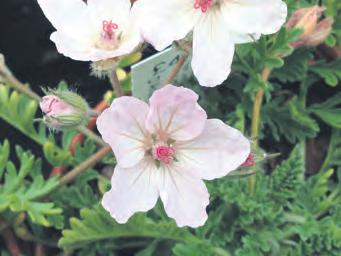
Too much water can spell death for plants. That’s why my rain gauge is the most important tool I have. This nifty gardening tool allows me to assess how much rain we’ve had. People often think that it rained so they don’t need to water, when really they got nothing.
People tend to overwater their indoor plants and underwater their outdoors ones. Growing plants hate erratic or irregular watering. You must read up on the crops you’re planting because some tolerate dryness better than others. But, as a rule of thumb stick a finger in the top inch of soil; if it’s starting to dry out, it might be time to water. An inch of water a week for each plant (this is where a rain gauge will come in handy in knowing how much water your plants are getting naturally). This measurement translates to about half a gallon per square foot.
Roy Wrelton via email

Bamboos are no different than any other plant in that they need proper care and attention. Firstly, choose the right plant; the phyllostachus varieties are mostly clump-forming but require 'digging around in early spring' to prevent any spreading. They are not suitable for hedging. I have several varieties from bright yellow to black. Remember they have no diseases, and nothing eats them (not many pandas in Dorset). They keep their leaves and are very robust , but don't like to be in the sun or allowed to dry out. They can live for a 100 years...I can go on. So do your homework and enjoy a spectacular plant. Right garden. Right place. Right plant?
Bill Wimborne sent via email
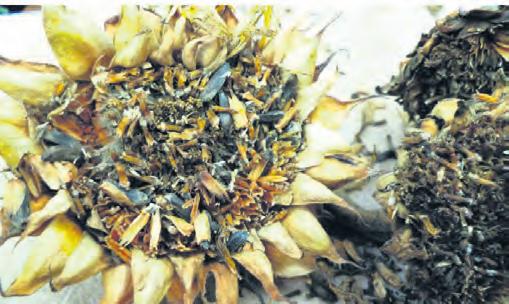
The
I’ve been saving seeds for about ten years now and would encourage people to try it.
With a little care you and all your neighbours can grow good seed; ideal for your own conditions, with better germination, and growing strong, healthy plants. You'll get better seed than you can buy. Saving seeds is not difficult! You can save seeds from tomato plants, peppers, cucumbers, pumpkins, and more for planting next year.
Root vegetables and greenery need to be allowed to bolt so that you can collect the seeds. This is how you'll save the seeds from carrots, radishes, beets, lettuces, broccoli and even some flowers.
Bolting means that you allow the plant to grow past the edible stage to the point that it grows flowers.
Allow the plant to bolt. Let the flowers grow and die back. Cut the flowers once dry using a white piece of paper (a paper plate works too) to catch the seeds as they're removed from the flowers.
Every little seed you’ve collected will produce another plant. It’s incredible the multiplication that happens when saving seeds.
Seed saving is easy; people have done it for thousands of years, in the process breeding all of the wonderful vegetables that we eat today. Only in the last century has it been taken over by professionals.
Mick Moore Portishead
I see lot of allotment holders on our plot digging the soil in hot dry weather. I don’t know why they choose to do this. It is surely against all the principles of gardening. Digging in dry weather damages the soil structure in a serious way. It also increases moisture loss and disturbs plant roots. It seems madness to me and I try and have a friendly word now and again but I don’t think it does any good.
Roy Strickland Poole
residents across Dorset take part in
Residents across Care South’s Dorset care homes have been keeping themselves busy in the garden this summer. Many Care South care homes have a gardening club formed of residents who share a keen interest in growing fruit, vegetables and flowers. They use the years of gardening knowledge and skills they have gained after tending to the gardens of their family homes to tend to a range of seeds and plants. The residents enjoy the sheer joy that all gardeners experience of seeing what grows well and can be enjoyed by others.
Residents at Buxton House care home in Weymouth planted a host of seeds in their purpose-built, raised flower beds to ensure that they could see a summer of colour outside. Resident, Arthur, was in his element as a retired farmer and gardener with a keen interest in growing fruit and vegetables.
Over at Dorset House in Hamworthy, some of the residents used their woodwork skills to put together some tiered raised planters. The residents who are members of the gardening club then filled the planters with seeds to grow carrots, cucumbers, tomatoes, spinach, kale, lettuce and seed potatoes with the help of little children visiting from the local nursery. They also planted forget-me-knots, sunflowers and lavender to encourage bees to visit the garden.
At Fern Brook Lodge in Gillingham, the bulbs planted in
the garden by the residents in spring are now in bloom and are often used by the flower arranging club to make table displays to decorate the dining tables and communal areas of the care home. It provides a great opportunity for the care home residents to get together to talk about their shared love of gardening and flowers, and they look out for Chelsea Flower Show on TV each year to gain inspiration for the following year’s display in the care home garden.
All Care South care homes benefit from a beautiful garden which have level-access with wide, flat walkways to make them accessible for everyone, with plenty of outdoor seating areas and benches to enjoy some quiet time. They also provide the perfect setting for the residents to host garden parties and barbecues to make the most of the sunnier weather, with friends and family always encouraged to join in the fun.
The gardens have also been designed to offer a sensory space. Scents from sweet peas, lavender and roses can stimulate memories, while touch can be stimulated through tree barks and grasses, and the residents can listen to a host of noises from bees and birds who visit the garden.
Care South is a leading provider of high quality residential and home care services across the south of England. The not-for-profit organisation, which is a registered charity, has care homes providing residential, respite and dementia care in Dorset, north Devon, Somerset and West Sussex, and home care offices covering east and west Dorset, and northeast Somerset and south Somerset.

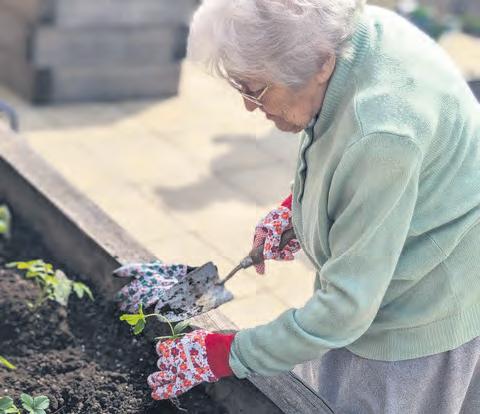





1
This is often one of the hottest months of the year and a great time to sit out and enjoy your garden. Keep plants looking good by regularly deadheading, and you’ll enjoy a longer display of blooms. Make sure you keep new plants watered, using grey water where possible. August is also the time to be trimming hedges and cutting back on strawberries.
Remember that plants in patio containers are dependent on you for their water as they’ll get little benefit from any rain. Give them a good soak at least once a day in sunny weather.

Towards the end of the month, even containers which had controlledrelease fertiliser added to the compost at planting time will start to run out of steam, so begin feeding once a week with a tomato feed. Remove spent flowers as they fade.
3
Light pruning helps to keep lavender compact and rounded, rather than leggy and bare at the base. Use shears to trim away the old flowering spikes and the top three cms of leaves. Full garden trials have shown you can prune in late summer or wait until spring as the timing makes no difference.
2 6
Watch for any signs of blight on potatoes and tomatoes. Keep leaves dry on undercover tomatoes as blight enters the plant when the leaves are wet. The first signs of blight on tomatoes are large, dark-brown spots on the stems. Similar brown patches appear on the leaves but they are lighter in colour or grey. Some fruits develop dark ‘bruising’ and smell bad. If you spot an infected plant, pull it up. The first signs of blight in potatoes are small, dark areas, often on the edges of leaves. Infected tubers have brown and purple skin blotches that go into the tubers. If you spot blight on the leaves, cut off all the top growth to stop fungal spores spreading to the tubers underground. Then wait two weeks before lifting them.

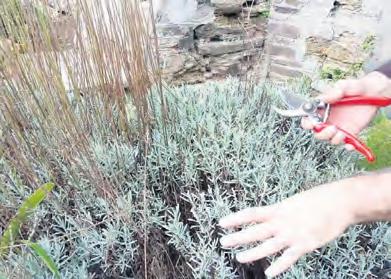
4 5
Choose a warm, sunny day and leave the potatoes on top of the soil to give the skins a chance to dry out fully before you store them. This way they will be much less likely to rot.
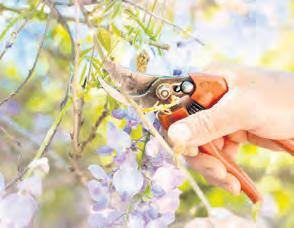
Wisteria needs be pruned twice a year to maintain its beauty. It will require pruning in January or February then again July or August. This will ensure the plant is kept in good shape and size and it will provide a better display when flowering.
Cutting back now – remove the young green stems that have developed this year down to around five leaves after flowering. The removal of growth in summer allows better air circulation and more sunlight to reach the base of the young growths, encouraging better ripening of the wood and improving the chances of flowering.
A bud is a small, undeveloped shoot that contains the potential for new growth. Buds are typically found on stems, where they can be apical (found at the tip) or axillary (found between leaf axils) and may develop into leaves, shoots or flowers.
Restricting the amount of vegetative growth and encouraging short, flowering spurs will result in more flowers.
There is lots to know about wisteria but if you are new to tending to them, take one step at a time and learn as you go..


Most houseplants will tolerate a few days’ absence without suffering, but absences of more than a week call for some creative measures to provide valuable moisture in the right quantity.
In the case of short absences during the summer, giving plants a thorough watering before going away may be sufficient. Moving them to a cooler room or away from a bright window will help prevent them drying out. For longer absences special measures can be taken to prevent the plant suffering or dying. These are based on providing a reservoir of water for the plant to draw on. You can place a sheet of capillary matting on the kitchen sink draining board or a suitable surface next to the bath. Drape one end of the matting into the sink or bath, which is filled with water. Plants should be grouped on the wet matting, ensuring they make good contact with it by pressing them down slightly. Clay pots need a thorough watering first for them to start drawing up water from the mat.
Whether you’re looking to flavour your meat or garnish your cocktails, herbs are the plant of the moment and a fantastic addition to gardens of all sizes. Cut back herbs, such as chives, mint and parsley, that are looking tired. This will encourage fresh new growth for a continued supply of leaves for summer dining. Oregano and thyme are perennial herbs which mean they grow back each year without needing to be replanted. To promote their growth each year, trim them in August before the winter months to ensure they withstand the frost.
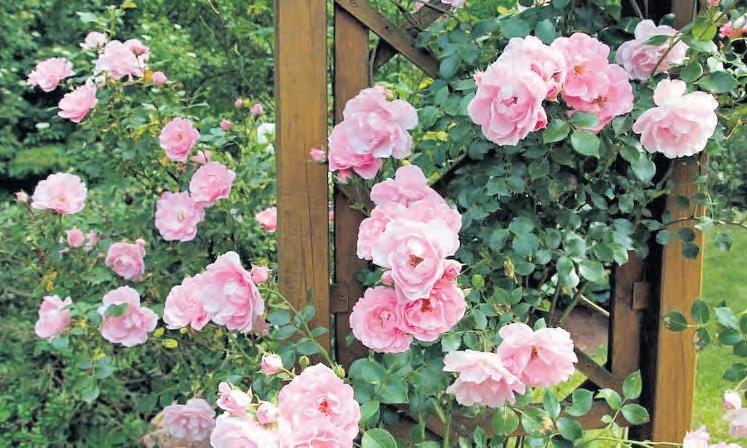
Our much-loved roses requires a little maintenance this month to ensure they bloom again before the season is out. Many roses will put on another display of fresh blooms, particularly many of the varieties which have been selected for their fragrance and long season of flower colour. Dead head spent blooms and boost with rose fertiliser to encourage healthy growth and a late summer display.
Tie in whippy growths on rambling roses to bear next year’s trusses of flower, positioning each stem as near to horizontal as possible. Training new growth in this way helps to encourage a prolific flower display along their length.

Here’s how to look after your grass this month
Don’t worry if your lawn is looking brown, the autumn rains will soon make it green again.
Don’t feed your lawn with a high-nitrogen fertiliser now as this will encourage lots of lush new growth which is easily damaged by autumn weather.
Lawn growth slows down in late summer so raise the cutting height of your lawn mower to help the grass cope.
If you’re planning on laying a new lawn this autumn, prepare the area now to give it time to settle.
Recut any lawn edges. Install lawn edging to make future maintenance easier. If your lawn is infested by ants, brush out the nests on a dry day. Always brush them away before mowing.
and pears: summer pruning
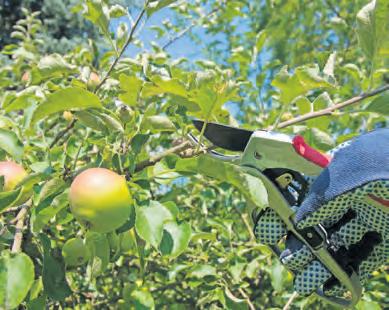
Summer pruning apples and pears allows sunlight to ripen the fruit and ensures good cropping the following year. This is the main method of pruning for restricted forms such as cordons, espaliers, fans and pyramids. Summer prune when the bottom third of the new shoots is stiff and woody. Generally, this will be from late-July for pears and mid- to late August for apples and about ten days later in the north. To reduce the possibility of secondary growth it can be delayed until September, when larger terminal (end) buds have formed at the shoot tips and the shoots have stopped growing.
New shoots are stiff and woody along their bottom third, with dark green leaves and a cluster of leaves at the base. Cut back new shoots (laterals) more than 20cm (8in) long growing from the main stem to three leaves above the basal cluster of leaves. Do not prune new shoots that are less than 20cm long as they usually terminate in fruit buds. Cut back new shoots growing from existing sideshoots (sub-laterals) to one leaf above the basal cluster. Remove any upright, vigorous growth completely.
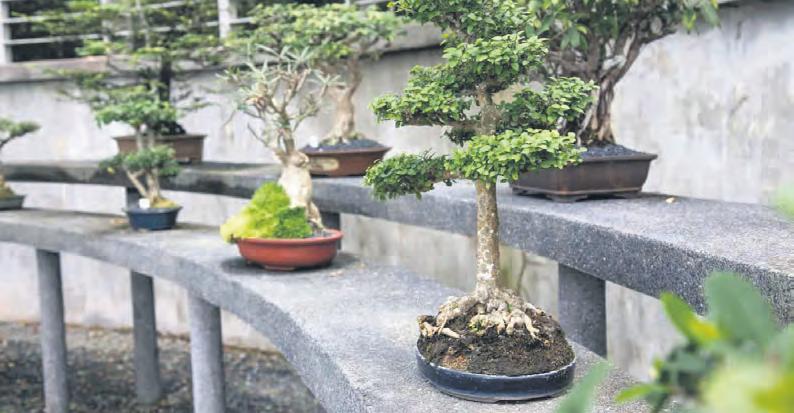
Andrew Filer has a collection of bonsai trees which he cares for in his Devon home and has been in love with the art of growing and shaping miniature trees for most of his adult life. He doesn’t however make his love of bonsai very public.
I am not sure why I don’t tell many people about my bonsai collection or why I love the trees. Perhaps I feel it’s a hobby which is a bit specialist and as I come from a family bursting with traditional gardeners, I feel I am the odd one out.
Why bonsai trees?
They represent the idea of a perfect balance between nature and art, representing how people can attain peace within themselves. My wife says that when I tend to the trees I go into a trance like state - based I think and hope that I seem so relaxed.
As bonsai trees are kept small through very careful pruning, I think they also represent a life-long commitment of patience and dedication to a task. You must absorb the history and sentiment behind the caring of trees and then you get part of the answer as to why we love bonsai.
I was given my first bonsai by a rather eccentric uncle after a period when I had been in bed after breaking my ankle playing football. I think he thought it was a bit like buying me flowers but I soon latched on to the difference.
It made me look at what bonsai meant and how it became so closely linked to an art form. Bonsai is put very simply, the Japanese art of growing and shaping miniature trees in containers, and it is in turn developed from the traditional Chinese art form of penjing . While both penjing and bonsai involve the cultivation of miniature trees, they differ in that penjing overall aims to showcase a wider range of styles and designs, and can include rocks, water features, and figurines.
“…a bonsai is not a dwarf plant - its proportions are maintained thanks to continuous care and attention.”
Bonsai is more focused on a single tree or a group of trees of the same species.
The term has I suppose widened out to become one of many forms of diminutive potted plants, and on occasion to other living and non-living things.
When I first researched bonsai, I read that the term should be reserved for plants that are grown in shallow containers following the precise tenets of bonsai pruning and training, resulting in an artful miniature replica of a full-grown tree in nature.
In the most restrictive sense, ‘bonsai’ refers to miniaturised, container-grown trees adhering to Japanese tradition and principles.
I am not on any campaign here. I just would like as many people as possible to understand the beauty of bonsai and how it is so closely linked with peace and reflection and indeed good humour.
We are talking about a tree with smaller dimensions, which needs periodic pruning of its roots, trunk and leaves, together with other techniques, like pinching or trimming shoots to maintain its small size.
The bonsai tree represents peace, balance, harmony and luck; and are typically given as presents to symbolise friendship, loyalty, love, and respect. Their meaning doesn’t stop there. If you receive a bonsai tree as a gift, fortune favours you.
And one last thing – they are very difficult to kill.
Bonsai trees are planted in small pots with minimal space for water and nutrient reserves. If you are tempted by all this, make sure your bonsai gets plenty of light, water, and fertilise when needed and your tree is sure to thrive!
And you will with it.

August gardens are normally the finished article.
All the work has been done on them and they happily await to be admired- which is why this is a great time of year to visit the many gardens , public and private which are open for high summer visitors. It is also the time of the year when holidays are to the fore and the chance to visit fairs, fetes and festivals
All that’s need is some decent warm, encouraging weather and then great days out await us all. We are again delighted to offer you with some suggestions of places to visit plus some events which you might like to add to your calendar.
August is a wonderful time for visiting previously undiscovered houses and gardens. At Hartland Abbey visitors can spend the day exploring a family home steeped in history and its romantic gardens and walks leading to a stunning Atlantic cove, with views to Lundy Island. Each year different plants thrive under different conditions and 2024 is certainly the year of stunning hydrangeas and gunnera thanks to the awful weather! ‘Malory Towers’ fans can enjoy looking for all the filming locations from the five series now showing on BBC IPlayer. Outdoor theatre performances are planned for July and August to entertain with evenings of culture and fun on the lawn. Bring a lovely picnic, rugs or chairs as this year there will be no barbecue or bar.
Hartland Abbey and Gardens, Hartland, Stoke, Bideford EX39 6DT Tel: 01237441496/234
For all information www.hartlandabbey.com
Barthelemy and Co near Wimborne in Dorset is a Japanese maple nursery that was founded in 1920. From sourcing and picking the seeds, some years over 100,000 Japanese Maples are produced and grown each year on the nursery by the Skinner family. Approximately 10-12,000 of these seedlings go on to be grafted with named varieties, using techniques passed down through the generations. Their focus on Japanese Maples has allowed them to perfect their growing and grafting techniques, producing some of the finest specimens available in the UK. Barthélemy & Co is not just a place to buy plants, but a living museum of horticultural history, where every aspect of the growing process is done with care and attention to detail.
Visitors to the nursery can see the passion and dedication involved on display and leave with a new appreciation for the beauty and complexity of these unique and captivating trees. Barthelemy and Co, 262 Wimborne Rd W, Wimborne BH21 2DZ

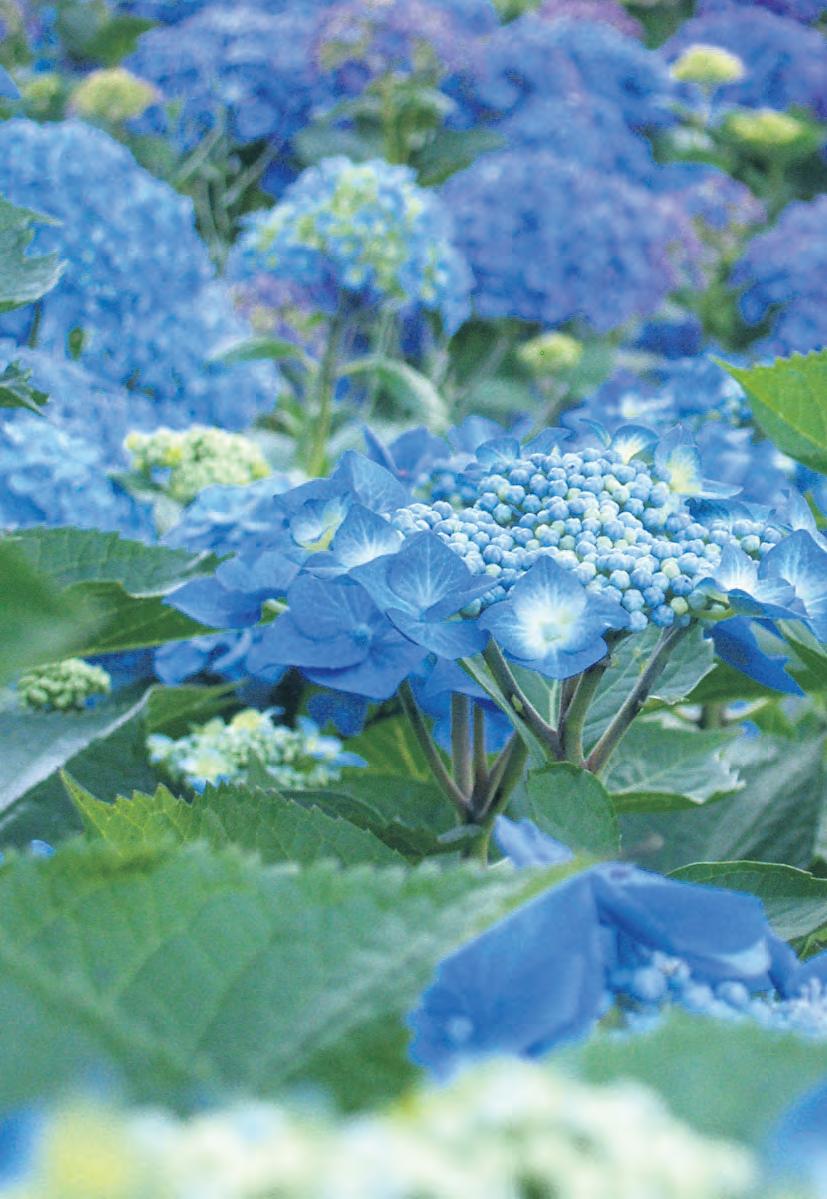
Dramatic blues and purple of the many hydrangeas light up the far side of the garden this month, as the bushes cascade down the hillside and are a feature of August.
Colour is everywhere. The herbaceous borders sparkling in the summer sun with fiery reds of Kniphofia and Crocosmia, mingling with the heady scents of cool white and pale blue phloxs, while the emerging dark purple stems of tall asters and bee covered flowers of Eupatorium create a crescendo of movement and colour.
Around the lakes, late flowering astilbes and purple lythrum continue the colourful spectacle for visitors to enjoy the twenty acres that is Marwood Hill Gardens.
The plant sales area sells many of the plants seen in the gardens, while our Tea Room provides delicious meals and a welcoming break from a flower filled walk around the gardens.
Marwood Hill Gardens, Nr Guineaford, Barnstaple, North Devon EX31 4EA Tel: 01271 342 528
Email: info@marwoodhillgarden.co.uk
Cadhay’s dahlia collection will ensure that there is a blaze of colour and the magnificent medieval ponds will have a calming effect however hot it gets. Cadhay has been given a lovely sun dial to celebrate 50 years of opening for the NGS and this has been installed in the garden. Throughout August the gardens are open every Friday afternoon from 2pm to 5pm and Sunday and Monday afternoon of the Bank Holiday weekend of 24th to 26th August when they will be open in aid of the NGS and Saturday 25th August in aid of Hospiscare. Cadhay EX11 1QT is a mile to the north of Ottery St Mary. See cadhay.org.uk for further details.
Cadhay House and Gardens, Cadhay, Ottery
Saint Mary EX11 1QT

Kelmscott Manor was the iconic country home of William Morris, father of the Arts and Crafts movement.
Today, visitors will find an outstanding collection which spans over 300 years and reflects the lives, ideas, and creative legacy of those who lived and stayed there.
A new exhibition “Mountains and plains and adventure: William & May Morris and Iceland”, celebrates the centenary of May Morris’s first trip to Iceland. The exhibition showcases previously unknown diaries, artifacts, and art reflecting the Morris family’s deep connection to Iceland. Visitors will discover May’s adventures and compare them with William Morris’s iconic visits.
For more information visit kelmscottmanor.org.uk
Kelmscott Manor, Kelmscott, Lechlade GL7 3HJ









Boscrege Caravan & Touri ng Park
With a welcoming atmosphere,set in12 acresofCornish countryside, BoscregeCaravan & TouringPark isthebest place to enjoy your Cornishholiday Only2.2 miles from one of the most beautiful sandybeaches in Cornwall, Praa Sands.
01736 762231 / 07973 184 42 9 enquiries@caravanparkcornwall.com www.caravanparkcornwall.com

We produce and grow the largest selection available in the UK. Plants are pot grown and suitable for garden, patio or bonsai.
Visitors welcome Mon-Sat 9am-1pm & 2pm-4pm
Barthelemy & Co (DCG), 262 Wimborne Rd West, Stapehill, Wimborne, Dorset BH21 2DZ
Tel: 01202 874283 enquiries@barthelemymaples.co.uk www.barthelemymaples.co.uk


Open Sunday 8 September
10am-4pm
Garden tickets: £10 pre-sale or £12.50 on the gate
Seniors: £7.50 pre-sale or £10 on the gate
Exhibition tickets: £5
Carers and children under 12 go free

Any questions contact the Estate Office on 01454 218203 or email estateoffice@badmintonestate.com
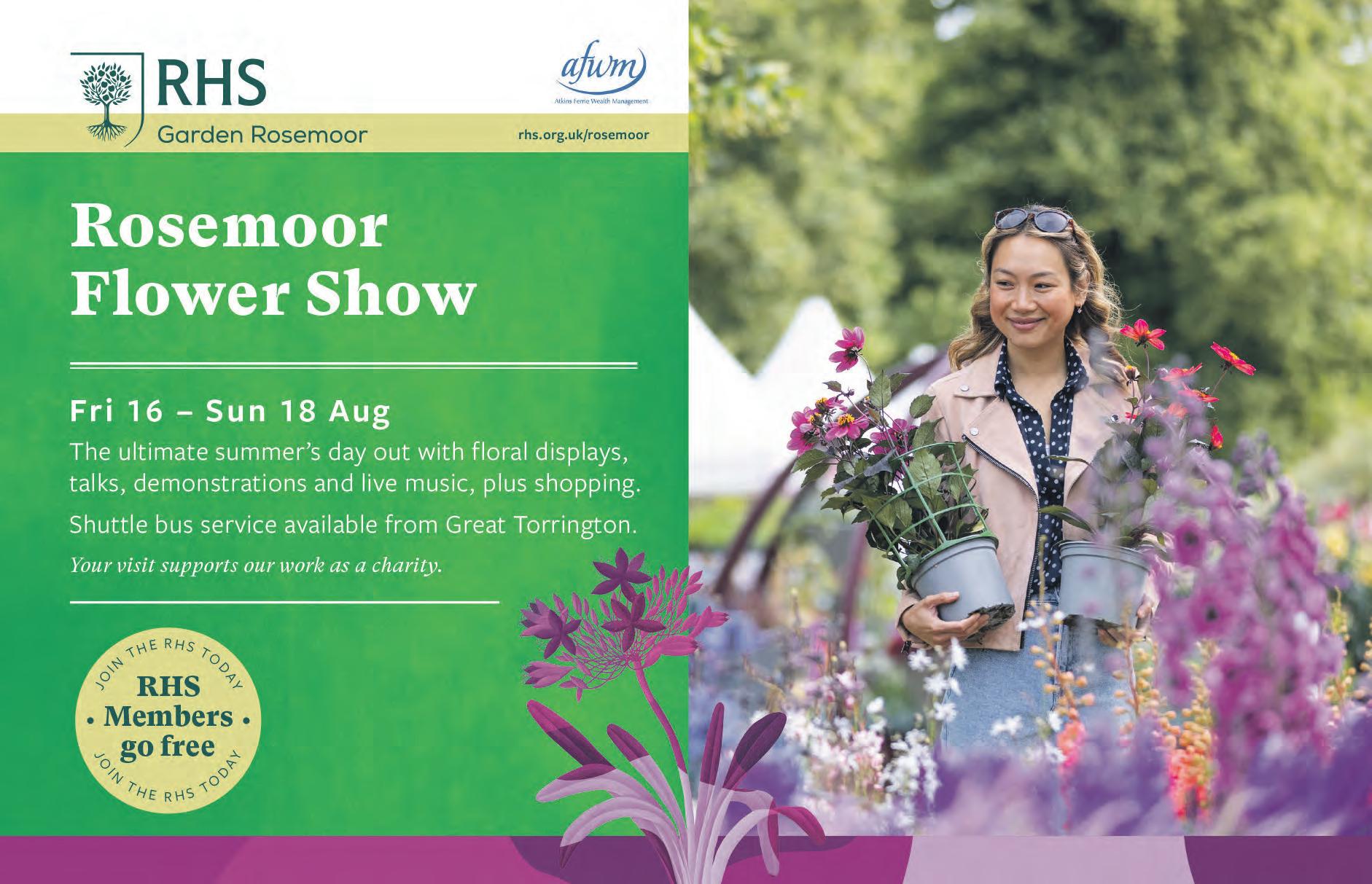
Boscrege Caravan and Touring park in Cornwall is a peaceful and picturesque park, set at the foot of Tregonning Hill, Godolphin National Trust and amongst tranquil Cornish lanes in an area of outstanding natural beauty. The park, open all year is close to the Cornwall coast and a few minutes’ drive to Praa Sands, one of Britain’s nicest beaches. So, if you are looking to take a luxury holiday (doggie friendly with dog friendly homes and on-site designated fields for the dogs too) in Cornwall in a either a self-catering caravan, lodges touring or even purchasing your own holiday home then contact Boscrege Caravan and Touring Park.
Boscrege Caravan Park, Boscrege, Ashton, Cornwall TR13 9TG Tel: 01736 762231 www.caravanparkcornwall.com
“When in doubt, plant a geranium”. So wrote Margery Fish, the renowned plantswoman and gardening writer, in her first book ‘We Made a Garden’, first published in 1956 and republished once again in June this year. The book is full of good advice and has inspired generations of budding gardeners to pick up a trowel and head out into the garden and it has encouraged many to visit her inspirational cottage garden at East Lambrook Manor to see for themselves the garden she created in the 1940’s and 50’s. The garden has changed little and is loved by visitors for its cottage garden abundance and its ability to inspire with planting ideas for their own plot. The house and garden, which have had three private owners since Margery Fish’s day, are currently on the market once again so, with its future uncertain, now is the time to visit before it is gone.
Margery Fish started a small nursery in the 1950’s and today the nursery, which now bears her name, still thrives offering an ever changing and tempting selection of cottage garden favourites for visitors to choose from.
Garden, nursery and café open Tuesday to Saturday, 10am to 5pm.

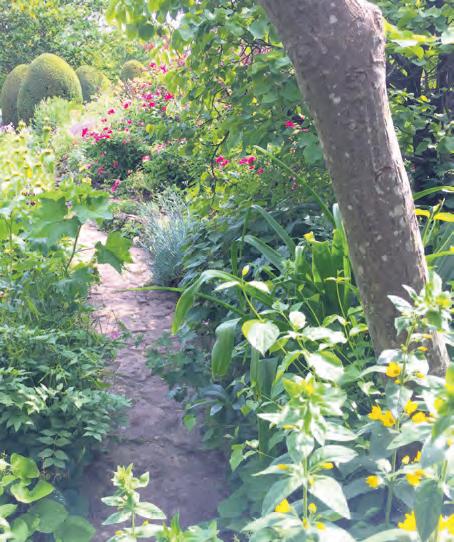
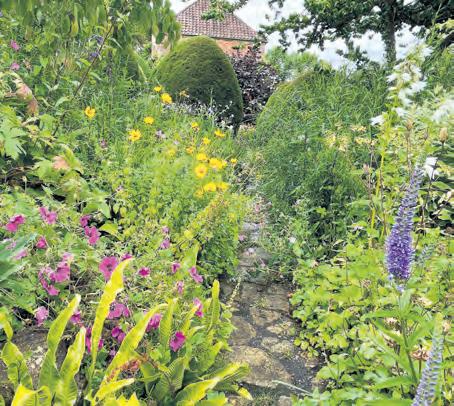
East Lambrook Manor Gardens, Silver Street, East Lambrook, South Petherton, Somerset TA13 5HH Tel: 01460 240328 www.eastlambrook.com
Great gardens, great cakes, great causes
From stately acres to country cottage gardens the National Garden Scheme opens exceptional private gardens to the public across England, Wales, Northern Island and the Channel Islands. In August, thousands of beautiful spaces open, many serving delicious home-made refreshments and plants for sale, all offering wonderful value for money while helping to raise millions for nursing and health charities each year.
Visit a National Garden Scheme Garden in August and be inspired www.ngs.org.uk
Mark your calendars for the last Badminton House Open Garden Day of the year on Sunday, 8th September. This event promises a visual delight, showcasing the beauty of Badminton House gardens, designed by Russell Page and Francois Goffinet. Visitors will enjoy vibrant flowers and meticulously manicured lawns. Explore the historic grounds, gain horticultural tips, and visit various plant and flower stalls. An exhibition of Mary Somerset, First Duchess of Beaufort’s, botanical paintings will also be open from 8th to 15th September, showcasing 30 reproductions from the original florilegium. Limited edition copies of the paintings will be on sale. Refreshments, including cream teas, will be available in the Old Kitchen. Open from 10 am to 4pm.
The Badminton Estate, South Gloucestershire, Badminton GL9 1DD Book at www.badmintonestate.com
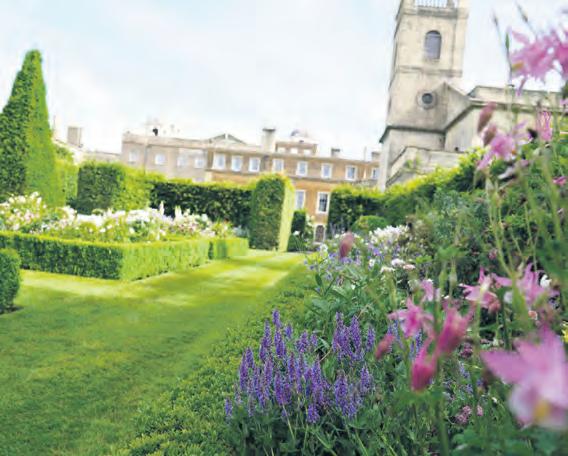
Thinking of re-stocking perennial and shrub borders while the ground’s still warm?
Whether you’re in the mood for borders brimming with herbaceous perennials or have in mind more minimal schemes of grasses, ferns and shrubs, keep Saturday 7th (9am-5pm) and Sunday 8th September (10am-4pm) free to explore West Kington Nurseries Massive Plant Sale. Normally a trade nursery, the seven-acre site will throw its gates open to all, with refreshments to revive the happy, plant hunting hordes. As well as presenting thousands of plants at keen prices, proceeds from catalogue sales will be donated to local charities so just follow the signs to West Kington from the A420 and fill your boots! Experts on hand to answer your questions.
West Kington Nurseries, West Kington, Nr Chippenham, Wiltshire, SN14 7JQ Tel: 01249 782822 wwww.wknurseries.co.uk




Sunday 1st September 2024 10am – 3pm
Abbotsbury Subtropical Gardens, Dorset DT3 4LA
Just off the beautiful Jurassic Coast Road.
Admission £7.00 includes entry to the gardens until 5pm (usually £12.95). Free admission to all Plant Heritage Members.
Large Fair featuring many specialist nurseries and growers, blacksmith & other craft stalls. Wildlife & conservation stalls. Solar powered Barista Coffee Stall. Free parking. Dogs on short leads welcome. Stunning location.
Proceeds support Plant Conservation, Events & Education in Dorset. Tickets at the gate or in advance: https://abbotsburytickets.co.uk www.plantheritagedorset.org.uk

ENJOY

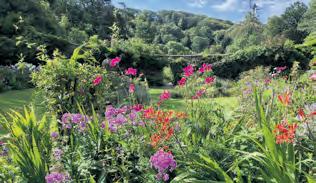
Visit our fascinating family home with its beautiful Walled and Woodland gardens, Fernery and Bog garden, walks to the Atlantic Coast, stunning architecture, collections, displays and film exhibition.
Location for Enid Blyton’s ‘Malory Towers’, ‘The Night Manager’ and much more.
* Dogs welcome * Holiday Cottages *
* Homemade light lunches & cream teas * Hartland Quay 1 mile*
Sunday to Thursday until 3rd Oct 11am - 5pm (House 2pm - 5pm last adm. 4pm)
For more information and special events see www.hartlandabbey.com Hartland, Nr. Bideford EX39 6DT 01237441496/234

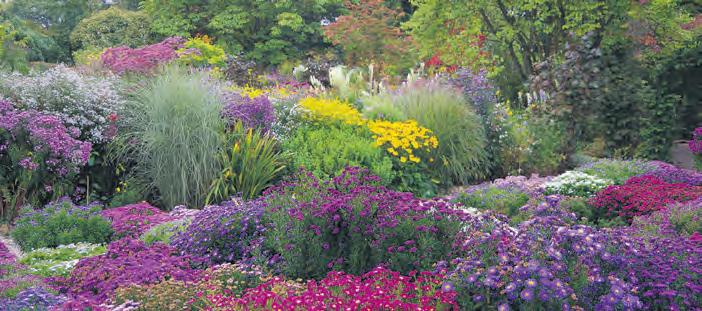



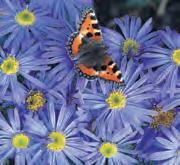

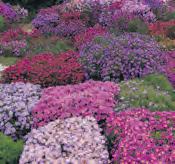
A must for plant lovers or those looking for a pleasant day out in beautiful surroundings, the weekend after the August Bank Holiday. This large plant fair on Sunday 1st September offers a very wide selection of plants, including exotics, late flowering perennials, alpines, succulents, grasses and shrubs to buy. There will also be several wildlife and conservation charities with stalls. Admission is £7 and includes all-day access to the beautiful Abbotsbury Subtropical Gardens on the Jurassic Coast between Weymouth and Bridport (normally £12.95). The fair is from 10am until 3pm but you can stay and explore the gardens until 5pm. Profits go towards supporting the National Collections, plant conservation and education in Dorset. Free parking, quality refreshments, dogs welcome on short leads. Tickets on the day or via: https://abbotsburytickets.co.uk
Abbotsbury Subtropical Gardens, Bullers Way, Abbotsbury, Weymouth DT3 4LA
Organised by Plant Heritage www.plantheritagedorset.org.uk
Nestled in the foothills of the Malverns,you will find The Picton Garden, home to more than 400 varieties of Michaelmas daisy. Uniquely it is in August that this one and a half acre plantsman’s garden begins to glow with the first of the asters and autumnal herbaceous, as autumn advances the colours intensify reaching a crescendo in late September and the first week of October. Afterwards the interest is carried on by the unusual trees and shrubs, chosen for their autumn colour, as well as late flowering bulbs, and herbaceous. The adjacent nursery is well stocked with many of the plants seen in the garden.
Picton Garden and Old Court Nurseries, Walwyn Rd, Malvern WR13 6QE

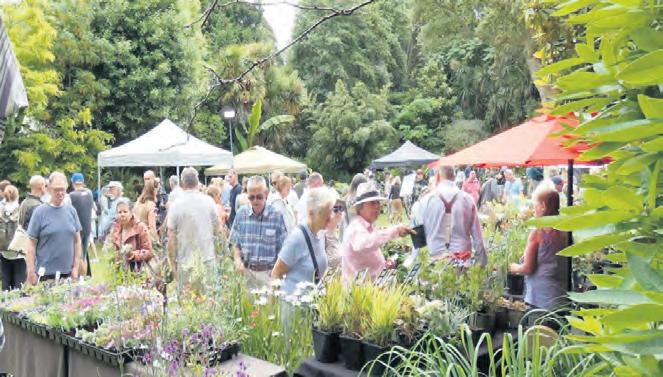
Packed with inspiration and ideas for the late summer planting Forde Abbey will be hosting its own Plant and Gardening Fair on Saturday 7th September.
There will be specialist nurseries from the Southwest selling plants and excellent craftsmen with beautiful gardening sundries for the none day event from 10:30 amto 3pm Many of the plant stalls are back by popular demand, but there will also be some new ones.
The growers are happy to chat about their plants and to offer their expertise and share their enthusiasm.
The fair takes place at the beginning of Forde Abbey’s popular dahlia display, a lovely time to see the garden transforming into its autumn colours and bursting herbaceous borders. The Coffee Shop will be open throughout the day serving hot drinks, light bites and homemade cakes. The award winning Gift Shop with some fantastic souvenirs will also be open, Eeles Pottery will be selling and showcasing beautiful pottery.
The in house plant nursery is also open from 10.30am – 3 pm and it is stocked with dahlias and a diverse range of herbaceous perennials, many rare and unusual. All the plants are grown at the Abbey.
A reduced entry fee of £7.50 to the Plant & Gardening Fair, including admission to Forde Abbey’s 30 acre gardens. Parking is free. Last Entry to the gardens at 3pm. (The admission fee applies to all visitors including children over 15yrs). Free Entry to Forde Abbey and Historic House Members.
Ford Abbey Estate, Chard, Somerset TA20 4LU



Home to four National Plant Heritage collections, this private valley garden spans over 20-acres and showcases three stunning lakes, rare trees & shrubs, and colourful surprises throughout each season. Not only a haven for wildlife, the garden is also the perfect environment to explore and be inspired. Enjoy a day of inspirational and relaxation for the whole family.
Catch up over coffee and homemade cake or a cream tea in the picturesque Garden Tea Room or take a bit of Marwood magic home with you from our Walled Garden Nursery and Plant Sales.


The three day RHS Garden Rosemoor Flower show being held from Friday, August 16th to Sunday,August 18th promises to be one of the highlights of the gardening summer. Visitors will be able to buy and browse quality plants from specialist nurseries offering a huge choice of grasses, flowers, shrubs and houseplants and speak to knowledgeable growers and RHS experts to get the best advice.
Celebrated floral designers Jonathan Moseley and Alison Penno will delight on stage with flower arranging demonstrations whilst nurseries will share their specialist knowledge in series of talks.
Devon and Cornwall Floral Art’s Floral Competition returns with classes for all skill levels – everyone is encouraged to enter; forms can be requested online or collected from the garden in advance.
A full programme of music and family entertainment is also scheduled, and the children can have baa-rilliant fun following the Great Garden Adventure with Shaun the Sheep!
Beat the crowds and park with ease by buying Early Bird tickets in advance online or opt for the free shuttle bus service running between Great Torrington and the garden on the day.
www.rhs.org.uk/gardens/rosemoor/rhs-garden-rosemoor-flower-show
RHS Garden Rosemoor, Torrington EX38 8PH

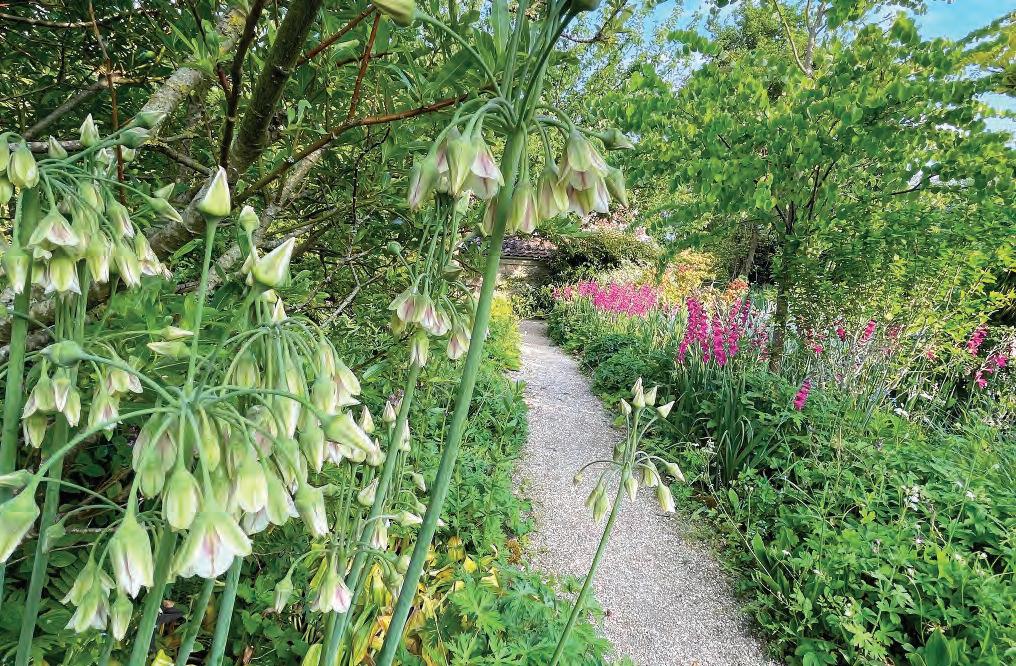



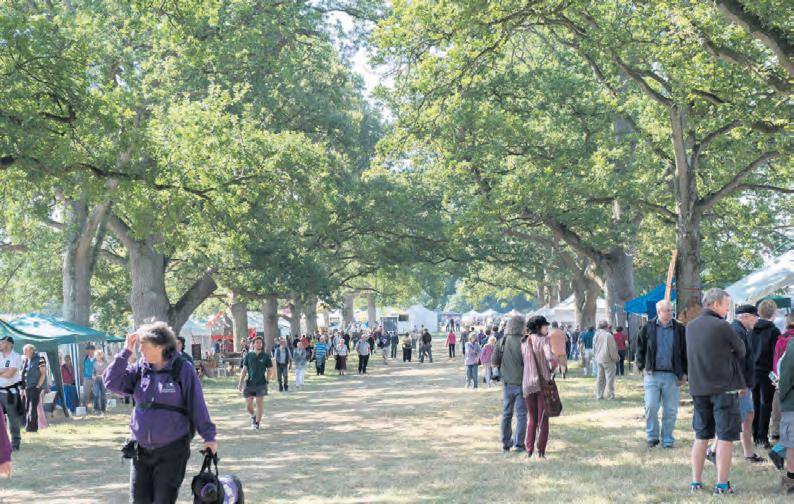
A celebration of countryside, woodland, timber, traditional craft and above all, conservation, the Oak Fair held on the Stock Gaylard estate in Sturminster Newton has something for everybody. With over 200 exhibitors showing everything from handcrafted wooden furniture to industrial machinery, the Oak Fair provides a platform for rural crafts and countryside conservation. Demonstrations include the ever-popular chainsaw carving, falconry, heavy horse logging, and the daredevil stunts of the Adams Axemen display. Get involved with hands on activities including tree climbing and archery, and children’s activities including bushcraft skills, face painting, little Land Rovers and tractor trailer rides.
It takes place over the weekend of Friday,24th and Saturday 25th August, opening at 10am Early bird tickets online: £14.00 adults, £2.50 children, £10 concessions.
Stock Gaylard Estate, Sturminster Newton DT10 2BG www.theoakfair.com
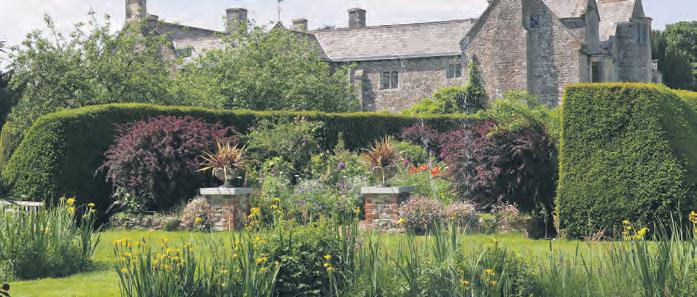

GARDENS & TEAROOM Open every Friday 2pm - 5.30pm from 3rd May to 27th September
Also last weekend in May & August Bank Holiday weekend - Sat, Sun & Mon
GARDENS: adult £5, child £1
CADHAY, OTTERY ST. MARY, DEVON, EX11 1QT 01404 813511 www.cadhay.org.uk Member of Historic Houses



Planting colourful vibrant smaller varieties of trees can transform your garden like nothing else can – making the right choices isn’t so easy

We all love trees – and rightly so.
Planting them in gardens and seeing them grow and flourish has always been a real joy for garden owners.
Trees can introduce a touch of magic, providing shade, privacy, and year-round beauty without overwhelming your outdoor space. But with limited space, choosing the right tree is key. There are many trees widely available for smaller gardens, in all shapes and sizes, evergreen and deciduous and the choice can be confusing. Given that many of us have limited space in which to garden, it becomes important that any trees chosen are right for their surroundings, in terms of proportion as well as for their decorative value. So, how do you choose the right trees for small gardens?
It’s important to know your limits when selecting the right tree for a small garden. Don’t fall victim to towering giants. Make sure to always consider the mature height and spread of the tree before planting. Opt for dwarf varieties or those naturally suited to smaller spaces. Try to think upwards. Small gardens benefit from vertical elements. Columnar trees with a narrow, upright growth habit maximise space without sacrificing greenery. For example, consider the European hornbeam (Carpinus betulus ‘Fastigiata’), which offers a sleek, architectural presence without demanding excessive square footage.
You can bring your garden to life with a vibrant display of crab-apple trees. These compact fruit trees offer a delightful profusion of white or pink blossoms in spring, followed by decorative red or yellow fruits that provide a feast for the eyes and hungry birds. Choose disease-resistant varieties like the Malus ‘Evereste’ for a low-maintenance option. Who can resist the iconic beauty of cherry blossoms? You could select dwarf flowering cherry trees like the Prunus ‘Pink Perfection’ for a springtime explosion of colour without overwhelming your space. These delicate blooms are a quintessential symbol of spring and will help to add a touch of whimsy to your garden.
Hawthorn trees are a charming and wildlife-friendly choice. They boast a beautiful display of white flowers in spring, followed by gorgeous red berries in autumn that attract a variety of birds. Hawthorn trees are also tolerant of most soil types, making them a perfect versatile option for many different gardens. For a touch of autumnal drama, consider the crimsonfruited variety.
If you’re looking for an evergreen approach, consider the hornbeam (Carpinus betulus) tree. This attractive native tree offers year-round interest with its dense green foliage. Hornbeam trees are relatively slow-growing and can be easily maintained with occasional pruning to keep them compact, making them ideal for smaller gardens.
The Portuguese laurel (Prunus lusitanica) is another great option. This fast-growing evergreen boasts glossy green leaves and can be easily shaped into a hedge or a small tree. Portuguese laurel is a good choice for providing privacy and screening in a small garden.
Just remember, it requires well-drained soil and may need some winter protection in particularly cold areas.
A majestic choice for a small garden, the English yew is a slow-growing evergreen with beautiful dark green needles. It can be pruned to help maintain the desired size and shape, making it a very versatile option for various garden styles. Just remember, all parts of the yew tree except the bright red fruit are poisonous, so keep this in mind if you have pets or young children.
There are lots of small, slowgrowing Japanese maples (Acer palmatum) that won’t overcrowd your garden. The foliage provides blazing
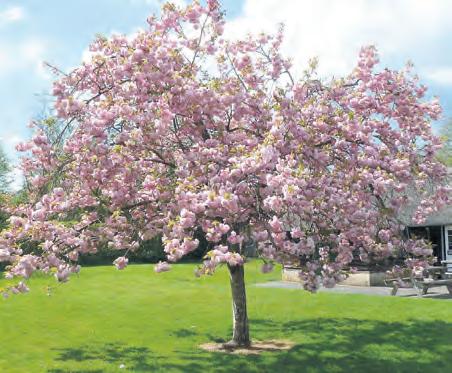
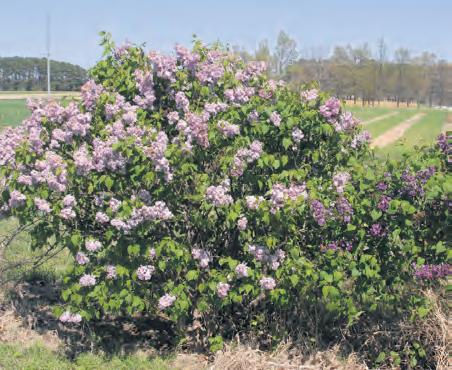
Cherries – fruiting cherries are perfect trees for small gardens. Their spring blossom is breathtaking and their fruit is delicious. Choose a cherry on a dwarfing rootstock to ensure it grows in your small space. Available as a standard tree or fan-trained.
Figs – native to Syria and Persia, fig trees have been grown in Britain since Roman times. Although the species doesn’t offer a reliable fruit crop in the UK, it’s still worth growing for its striking, lobed foliage. Shelter the fig against a warm wall. ‘Brown Turkey’ is considered one of the best varieties for growing in the UK. Espalier apple trees – to make the best use of space, choose a ‘family tree’ espalier, where each arm is a different variety of apple. Plant against a warm, sunny wall or use as a garden divider.
Peaches – peaches make lovely small trees, and contrary to what you might think, they’re hardy and will provide a crop in the UK. To get fruit it’s essential that they’re planted in a warm, sunny and sheltered spot – frosty spots will increase the risk of damage to the flowers. Well suited to training as a fan or espalier.
autumn colour and grows in an attractive shape. Grow them in a sheltered spot, out of direct sun, or try them in a large pot. There are some lovely varieties to choose from, but Acer palmatum ‘Orange Dream’ is a particular favourite.
Cercis – commonly known as redbuds, Cercis trees are grown for their spring and summer blossom, with some cultivars having dramatic bronze or purple foliage, too. Cercis chinensis ‘Avondale’ will reach around 3m tall, while Cercis canadensis ‘Forest Pansy’ will grow to 8m. Cercis siliquastrum, the Judas tree, reaches 4.5m.
Tiny trees with a big impact
Smoke Tree (Cotinus coggygria): This small, multi-stemmed tree is a real conversation starter. Smoke trees are best known for their stunning display of feathery plumes in shades of pink, purple, or red during the summer months. They are relatively lowmaintenance and can thrive in most well-drained soils.
• Flowering dogwood (Cornus): While some dogwood varieties can grow quite large, there are stunning dwarf options perfect for small gardens. Cornus is a beautiful example, boasting vibrant blooms in spring and attractive foliage in autumn. This delightful little tree is sure to add a touch of elegance to your patio.
• Viburnum (Viburnum opulus): Viburnums are a diverse group of shrubs and small trees, offering a variety of options for outdoor spaces. Viburnum opulus, or the Guelder Rose, is a popular choice with its large clusters of white flowers in spring, followed by bright red berries in autumn. This versatile plant can be grown as a single-stemmed tree or a multi-stemmed shrub, depending on what you would prefer. Consider the Viburnum davidii for its extremely fragrant white flowers in late spring.
• Lilac (Syringa vulgaris): For a touch of nostalgia and a beautiful fragrance, look no further than the lilac. Syringa vulgaris is a compact variety that offers clusters of fragrant blue flowers in late spring, perfect for filling your garden with a delightful aroma.
There are several things you will need to keep in mind when choosing the right tree for your small garden, including the following:
HEIGHT AND SPREAD: This is probably the most important factor. Even small ornamental trees may, over time, reach a height of six to eight metres (20-26ft) or more. If this is too much, consider a weeping form, as these rarely increase much in height, or choose a large shrub. If spread is a problem, such as in a very restricted area, consider a columnar tree, as these do not spread appreciably.
SEASON OF INTEREST: Consider when you want your tree to look good, thinking about flowering time, foliage, fruit and bark. If you only have room for one tree ideally look for one with more than one season of interest such as fruit or autumn colour following on from flowers.
DECIDUOUS OR EVERGREEN: Both types of trees have their advantages, the obvious one for evergreens being that they keep their leaves throughout the year. But many deciduous trees provide lovely autumn foliage colours not available with evergreen trees.
Deciduous refers to plants (mainly trees and shrubs) that lose their leaves seasonally, usually during autumn. This is a natural process triggered by the season’s shorter days and lower temperatures and allows plants to conserve energy during the winter months.
To avoid planting a tree too large for the site, it may help to draw a scale plan of your garden and plot the size of your tree at maturity. If planting in the corner of your garden, be aware that most of the canopy will shade neighbouring gardens.
To help you choose, you may find it useful to visit gardens where a good range of well-established and mature ornamental trees can be seen and evaluated.
SUNLIGHT: Research the sunlight requirements of your chosen tree and ensure it gets enough light to thrive in your garden. Most gardens receive plenty of sunlight, but it’s always good to check, especially if your garden is north-facing.
PLANTING RIGHT: Dig a planting hole that’s twice the width of the tree’s root ball and water regularly, especially during the first year.
UPKEEP: Choose trees with minimal pruning needs to save yourself time and keep your garden manageable. Some trees, like hornbeam and yew, respond well to occasional pruning to maintain their shape and size.
Transforming your small garden into a verdant oasis doesn’t require sacrificing precious space. By choosing the right petite trees, you can introduce vibrant blooms, captivating foliage, and even a touch of privacy without overwhelming your outdoor space. Remember to consider the mature size of the tree, sunlight requirements in your garden, and your own desire for minimal maintenance. With a careful selection from this list, you can create a haven that bursts with seasonal interest and provides a delightful escape right outside your door.
So, get planting and watch your tiny trees transform your garden!

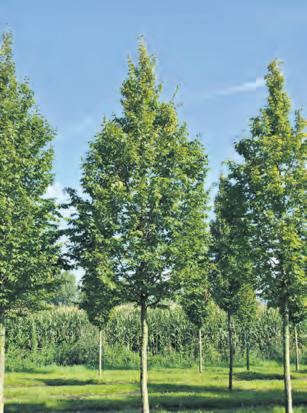
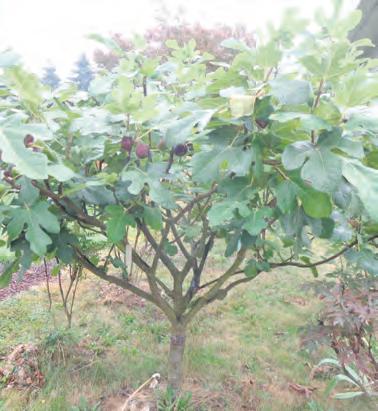
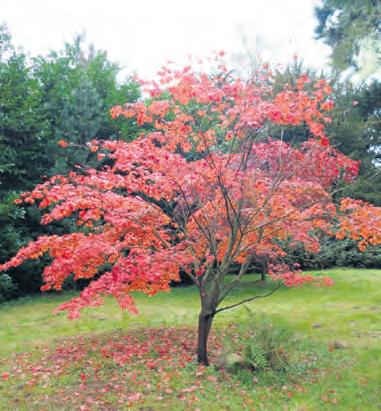










Welcome to Country Gardeners’ annual guide to gardening speakers and lecturers offering their services to gardening clubs and associations.
It’s been a good last 12 months for gardening clubs throughout the south and south west.
Membership generally is increasing, new clubs have been formed and the traditional strength of clubs and their busy schedule of meetings , trips, fetes and flower shows is more like back to the old days.
Over 300 garden clubs and associations through the south and south west have been back in action after a tough few years following the Covid pandemic when meetings just were not possible., interest faded and some clubs had to admit a loss of interest amongst members
So many who were forced to shut down three years ago have
1 BroomHill Cottage, Broom Hill, Huntley GL19 3HA q 01452 830 258 E woodmansworld@live.co.uk
1. Trugmaking by a miserable old trugger - I think that’s what the wife called me
Benson Bush, Itton, Chepstow, NP16 6BZ
07860646613 adam@theseeddetective.co.uk www.theseeddetective.co.uk
MEETINGS WITH REMARKABLE VEGETABLES parent to cultivated offspring ADVENTURES IN ALBANIA into botanical diversity and wonderful fruits and vegetables

3. THE ADVENTURES OF A SEED DETECTIVE – finding rare and endangered vegetables around the world
4. THE CULTURE OF SEED SAVING – it’s easy and fun to continue a 12,000 year-old tradition.
5. ETHIOPIA – discovering crop diversity and what traditional horticulture has to teach us about growing at home.
6. THE GARDENS OF THE MEKONG – A voyage of discovery revealing the secrets of growing along the river bank
7. THE SEED SAVERS OF RAJASTHAN –Uncovering the surprising world of delicious local varieties.
8. THE GARDEN ABOVE THE ESTUARY – Creating a space to grow rare, delicious vegetables for seed. Adam, who has grown vegetables since a young boy is a consummate and entertaining storyteller, author and producer of food and gardening programmes. He has appeared on TV including Gardeners World and collects rare and endangered vegetables from his travels, saving and sharing seeds.
taken time to reform and have been busy putting together yearlong programmes for their members.
It has always been a tradition that gardening clubs plan visits and trips out during the summer but rely on visiting speakers to entertain their members during the more restrictive autumn and winter months. Which means everyone is looking for the right gardening speaker to captivate members.
Every year Country Gardener has been able to produce an effective list to provide an invaluable aid for speaker options, ideas and subjects. We have full details on each speaker including a synopsis of the subjects they talk on, what they charge and how far they are willing to travel.
If you come across speakers who you have been impressed with let us know and we will try and include them in a future edition of the magazine and update our online information.
q 01278 784110 / 07896351693
E coxmyra20032000@yahoo.co.uk
1. Enjoy watching a flower demonstration
2. Seasonal inspirational ideas for: Around the Home / Celebrations / Village Flower Shows / Church
3. Christmas Cracker Fun with Flowers
4. Tales of Somerset
2. Besoms and Gypsy Flowers
3. Bees and their products
35 Wembdon Rise, Bridgwater, Somerset TA6 7PN q 01278 451814 / 07788593674 E rvcheek@btinternet.com
1. Chelsea Flower Show - Creating 20 different silver and gold gardens and displays.
2. Irresistible garden plants for Butterflies - Bringing them winging in by adding carefully chosen plants.
3. Insectivorous plants - Discover new hardy year round attractive ones for the garden or the windowsill.
4. Fascinating Gardens - Choose from 50 regions worldwide from Cornwall to Costa Rica.
5. Holly & Ivy - New kinds and uses. Fascinating finale.
Many other talks, ask for details. Widely experienced and qualified, Roy progressed from Gardener to Director of parks and gardens around Britain. As senior lecturer and curator of gardens in Somerset he amassed ten thousand different plants, ten national collections and created new hybrids, diverse gardens and gold medal exhibits at Chelsea. Now Chairman of an RHS trials forum, international tour leader, judge, advisor, designer and writer.
5. From garden to final arrangement /display Sundries and greeting cards for sale. Arrangements will be available to raffle.
Corner Cottage, Great Street, Norton sub Hamdon, Somerset, TA14 6SJ q 07594 574150
E info@katherinecrouch.com Ħ www.katherinecrouch.com
1. New Tricks for Old Gardeners
2. Plants That Should Be Better Known
3. Grow the Food You Can’t Buy
4. The Self Seeding Garden
5. Hardy Exotics Plants – will they suit your garden?
6. Bulbs that Should be Better Known
7. Ornamental Grasses in the Garden
I am a garden designer in Somerset, a life long country gardener, BBC Gardener of the Year 1999. BBC Gardener of the Decade 2008, Chelsea Gold Medal winner 2013. My talks are entertaining as well as informative – nobody will be asleep at the end!
Former owner of Cleeve Nursery q 07739 977431 E downtoearthfd@gmail.com Ħ www.down-to-earth.co.uk
1. All year round fragrance in the garden
2. Gardening in containers
3. Great foliage plants
Please contact me for the full list.
39 Regents Park, Exeter, Devon, EX1 2NY q 07717 846814 / 01392 437792 E becca.redkite@gmail.com Ħ www.rowanleaf.co.uk
1. Wildlife Gardening - Attracting beneficial wildlife to your garden
2. Water, Water Everywhere - Ponds, bog gardens and water-wise gardening
3. The Best Of Friends - Companion planting techniques for a healthy, productive garden.
32 Addison Close, Exeter EX4 1SJ q 07720714720 E ladyhort824@yahoo.com Ħ www.ladyhorticulturist.co.uk
1. Women in Horticulture - past and present
2. Pots and Baskets
3. Other talks available
Claire Forster CMTGG (Consultant member of The Gardeners Guild), qualified RHS Certificated Horticulturist with RHS Level 3 Advanced in Horticulture. 20 Years professional horticulturist experience. Featured in Devon Life Magazine.
Can’t wait until next year’s Speakers List?
WHY NOT ADVERTISE YOUR SPEAKER SERVICES IN OUR CLASSIFIEDS SECTION THROUGHOUT THE YEAR INSTEAD?
Email: classified@countrygardener.co.uk for more details.
Award Winning Garden Designer 20 Sandhurst Road, Yeovil, Somerset BA20 2LG q 07899710168
E juliesandhurst1@gmail.com
Ħ www.sandhurstgardendesign.co.uk
1. Container Planting
2. Planning your Garden Borders
3. An Introduction to Garden Design
4. Going for Gold - Exhibiting Show Gardens at RHS Chelsea Flower Show, BBC Gardeners’ World Live and Taunton Flower Show
HINSLEY, MARK ARBORICULTURAL CONSULTANT
Office F11, 10 Whittle Road, Ferndown, Dorset, BH21 7RU q 01202 876177
E enquiries@treeadvice.info
Ħ www.treeadvice.info
1. The Churchyard Yew
2. Trees in your Garden
3. Trees and the Law
Please contact us to discuss requirements.
Netherfields, Frog Lane, North Nibley, Glos GL11 6DJ q 07876 196074
E margiehoffnung@gmail.com
1. Rosemary Verey 1918-2001 - Her Contribution & Legacy to C20 gardening
2. Garden Visiting - a very British Tradition - A lighthearted look at the many different aspects of why we visit gardens
3. Blaise Castle - A Stranger at Blaise
4. Westonbirt School - A Historical Introduction to the Gardens
Malmesbury, Wiltshire
q 07711285447
E info@nicolahope.co.uk
Ħ www.nicolahope.co.uk
1. Designing an Organic Garden
2. No-Dig and Polyculture in your garden
3. Organic Gardening ~ happy plants, happy minds
4. Tales from the Potting Shed ~ where gardening magic begins!
5. Talking Tomatoes ~ Seeds with Stories make Tastier Fruits
Great Torrington, Devon, EX38 7DN
q 07810445241
E ric@rjhorticulture.co.uk
Ħ www.rjhorticulture.co.uk
1. Understanding Design Principles
2. Garden Assessments: Interpreting & Improving your Garden
3. Tree Climber to Garden DesignerMy Journey
4. Mastering Garden Maintenance
5. Reviving & Evolving an NGS Garden
Covering Devon, Cornwall and Somerset
Please get in touch for further information.
B £D
1 Stanley Cottages, Blaisdon Longhope, Gloucestershire GL17 0AL q 077 66 197 129
E nmignotte@aol.com
1. Gardens of Versailles
2. Islamic Gardens
3. Medieval Gardens
4. Landscapes of Vietnam and Cambodia
5. Seasonal Colours in the Garden
6. Le jardin Majorelle in Marrakesh
Please, feel free to contact me for more information on the above talks as well as on further subjects. I base my presentations on personal experience, photography, travel and academic research.
Travel charges and fee on request. Thank you.
Instagram: @nahemi25
Facebook: Nathalie Mignotte - Guest Speaker and Horticulturist
Pococks Roses, Jermyns Lane, Romsey, Hampshire, SO51 0QA q 01794 367500
E sales@pococoksroses.co.uk
Ħ www.garden-roses.co.uk
1. Growing roses with ease
Can travel up to 50 miles from our base in Romsey or Newquay, Cornwall
Swallows, Withleigh, Tiverton, Devon EX16 8LA q 01884 242965
E stephen@stephenpowles.co.uk
Ħ www.stephenpowles.co.uk
1. Hedgehogs - In Need of Your Help
2. Otters - Coming to a River Near You
3. Hammer Scar - Five Years Together (all about the five years Stephen spent filming one individual otter in amazing detail)
4. Tawny Owls - Coming to a Wood Near You
5. Hornets - Gentle Giants
6. Wildlife Photography - Tips and Experiences
7. The Countryside Detective
8. Wildlife Photography - In Pursuit of the improbable
...and more. Please see his website or contact Stephen for his full list of talks.
Stephen Powles is a passionate naturalist, award winning wildlife photographer, film maker and conservatist. His specialist interests are otters, tawny owls and hornets. He, the otters and the hornets have appeared on national TV. Most of his wildlife subjects are found in and not far from his house.
Middle Path, Keble Road, France Lynch, Stroud GL6 8LN q 01453 884092 E cjsheldrick@gmail.com
Ħ www.carolinesheldrickmedicalherbalist.co.uk
Caroline gives entertaining and informative illustrated talks on:
1. A year in the cutting garden
2. Health from the hedgerow
3. Medicinal plants in the garden
Caroline is a semi-retired medical herbalist, and grows plants and flowers for cutting. Do contact her with any special requests, e.g. for herb walks or hands-on remedy making workshops.
Malmesbury, Wiltshire E atpgardening@gmail.com q 07546874083
1. Off the beaten track, hidden gems
2. Stumperies, ferns & shady friends
3. Art of Topiary & Ornamental Hedges
4. Glorious gardens, a gardeners choice
5. A Winter’s Tale from Sept 2025
10 Rowbarton Close, Taunton, Somerset, TA2 7DQ q 01823 278037 E dave.usher@hotmail.com
1. Gertrude Jekyll - Her Plants & Designs.
2. The Restoration of Hestercombe Gardens
3. Bedding Plants for your Gardens
4. Care and management of trees & shrubs
5. The history of our gardens
6. The answer lies in the soil
7. Herbaceous Plants
David, a professional gardener for over 40 years, was Head Gardener at Hestercombe for 18 years. He is interested in all aspects of ornamental gardening and has given talks to a wide variety of groups. Contact him for a brochure about his talks. David is also available for giving talks via Zoom.
14 Mill Park, Newent, Gloucestershire GL18 1EX q 01531 579160 / 07767 690009 E mail2@thegardenlady.me.uk Ħ www.thegardenlady.me.uk
1. Planting and Plant Care
2. How to love your garden
3. Design and Create a Garden to be Proud Of
Many other talks available, please ask for more details.
17 Seymour Drive, Torquay, Devon, TQ2 8PY q 07964 824673 E info@garden-together.co.uk
1. Camellias
2. The Scented Garden
3. History of TEA
Ex Head Gardener of private estates and now specialist camellia grower of over 500 varieties and a wide range of fragrant plants. RHS Chelsea Flower Show Gold Medallist
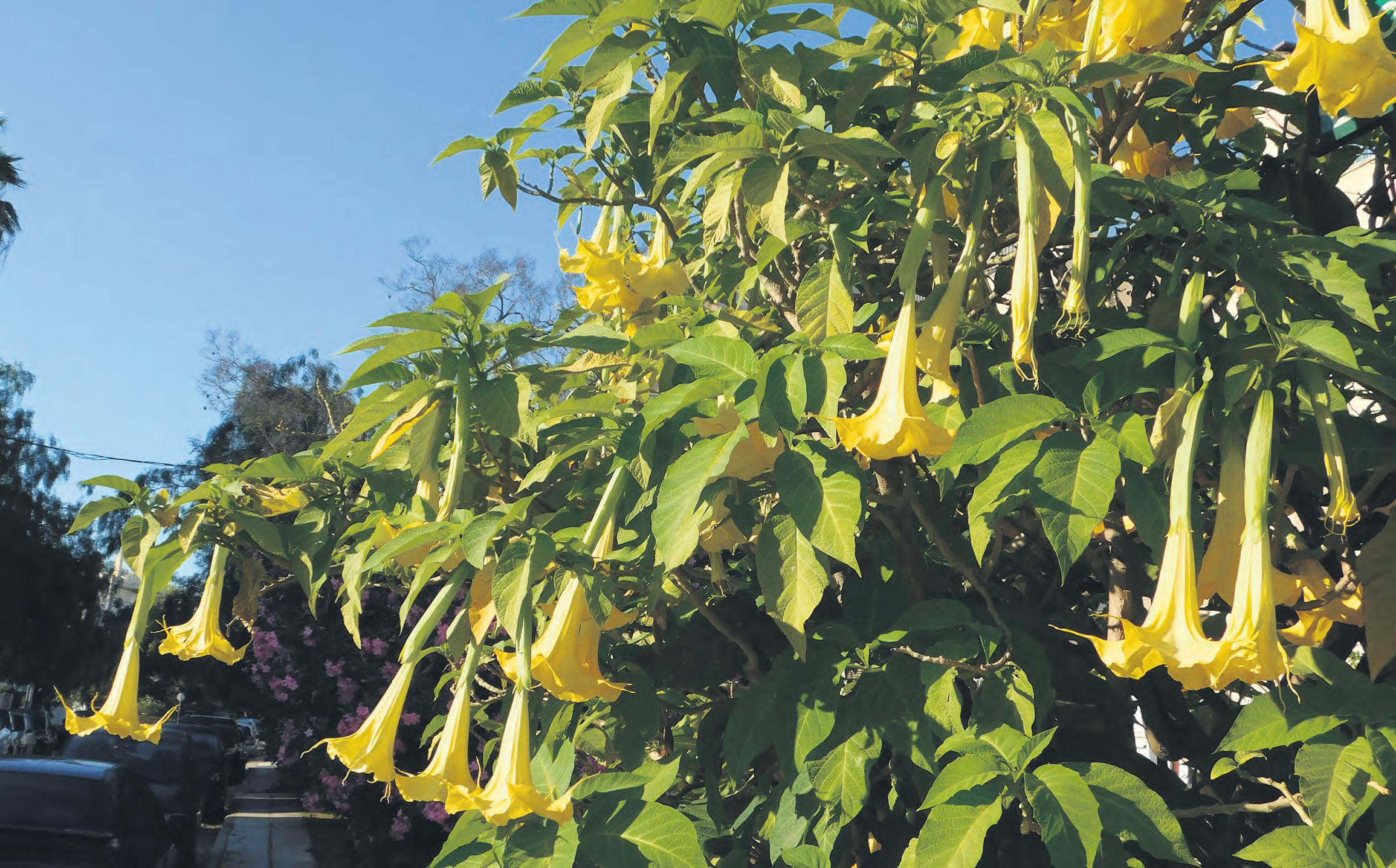
This fast-growing South American plant is known for its unique blooms but they are very demanding in terms of sun and water
Brugmansias are famously also known as angel’s trumpets. These tender tropical shrubs or small trees are grown for their highly fragrant flowers. White, red or pastel shades of pink, orange or yellow, the large, flared trumpets hang from the branches throughout summer. The flowers can grow to an impressive size – up to a foot long – and waft their heady perfume far and wide, especially on warm evenings.
Brugmansias come from tropical regions of South America. Here, most species are pollinated by moths, which is why the flowers are noticeably more fragrant in the evening. Only one species, Brugmansia sanguinea, has no fragrance, as the flowers are pollinated in the wild by hummingbirds, which are attracted by the bright red colour of the flowers.
The best place to plant angel’s trumpet is in a spot that boasts full sun. However, in especially hot or dry environments, it can stand a bit of shade, especially during the warmer afternoon hours. Angel’s trumpet needs between six and eight hours of sunlight daily to thrive and produce the best blooms.
The good news is the UK has the perfect humidity and temperature to support brugmansai growth but the more challenging part is overwintering the plant when temperatures dip below freezing.
Angel’s trumpet needs six to eight hours of full sunprofuse blooming. As long as the plant receives a fair amount of sun, it will produce blooms all summer long and grow several feet in just one season.
With its large, scented, trumpet flowers, hanging in abundance from its branches all summer, this tropical shrub or small tree is a real showstopper. Grow it in a large container outdoors in summer or indoors all year. Protect it from winter cold, and water liberally and daily throughout the growing season.
Plants can flower very abundantly over a long period, especially more mature specimens. But they do need lots
of water and feeding throughout the growing season, and must be kept above 7–10˚C (45–50˚F) in winter.
Brugmansias are often confused with datura, which have similar trumpet flowers. However, with brugmansias the flowers hang downwards and the main stem and branches are woody.
You can buy a selection of brugmansias from online suppliers, particularly those specialising in exotic or conservatory plants. Some garden centres may also stock them. Plants are usually available from late winter to summer, in pots from nine cms diameter upwards. Small plants are usually cheaper, but some may not bloom for a year or so, until they reach flowering size.
Before buying, make sure you have somewhere to keep your brugmansia over winter. Most need a temperature of at least 7–10˚C (45–50˚F). Brugmansias are vigorous growers and can reach well over 2m (6ft) tall, so you need plenty of space to accommodate them. Still, you can prune them at the end of the season.
The period of time when an individual plant is in active growth will depend on the local climate and light levels, and can vary between different plants, although it is broadly from spring to autumn.
Also be prepared to water your brugmansia at least once a day in summer – they are very thirsty plants. They need a weekly feed to boost flowering too. But in return they should give you a spectacular display of large, exotic, richly scented flowers all summer long.
Plant brugmansias individually in large containers, to stand either indoors all year or outdoors in summer. You can also plant them temporarily into borders over the summer, then re-pot them and bring them indoors in autumn.
Indoors, brugmansias need bright light, such as in a
conservatory or beside a large sunny window, or in a heated greenhouse.
Outdoors in summer, give them a warm, sheltered spot, in partial shade or sun. Planting in partial shade means they should dry out less quickly.
They do best in locations that receive plenty of summer rainfall, as they dislike dry conditions. In regions that have very low rainfall in summer, or in very free-draining soil, you will need to water them particularly well.
Brugmansias make eye-catching focal points, and suit a wide range of garden styles, formal or informal, traditional or contemporary. These include exoticstyle gardens, sheltered urban courtyards or patios, Mediterranean gardens, and more. They work well with other exotic plants, including dahlias.
The best place to plant angel’s trumpet is in a spot that boasts full sun. However, in especially hot or dry environments, it can stand to have a bit of shade, especially during the warmer afternoon hours. Angel’s trumpet needs between six and eight hours of sunlight daily to thrive and produce the best blooms.
Angel’s trumpet is perhaps the least picky about its soil. It can exist happily in almost any blend, from sand and clay to loam and richly organic mixtures. The most crucial factor is the soil’s drainage.
Brugmansia does not like to be waterlogged but prefers consistently moist soil, so there’s a delicate balance. If growing in pots, this plant will typically do well in a potting mix designed for azaleas and camellias. If planted in nutrient-poor soil, be prepared to fertilise the plant often, as brugmansia is a heavy feeder.
Brugmansia species have distinctive, drooping trumpet-shaped flowers, and most produce sweetly-scented blooms that open at night. The most significant difference between each species is bloom colour.
• Brugmansia suaveolens: this cream-coloured blooming plant is one of the most popular species.
• Brugmansia aurea: This plant sports yellow blooms and is often called a golden angel’s trumpet. It’s native to Ecuador and Venezuela.
• Brugmansia sanguine: This red-flowering species has no scent and in its native area is commonly pollinated by long-billed hummingbirds.
• Brugmansia vulcanicola: Native to the Andean Mountains ranging from Colombia to Ecuador, this salmon-coloured specimen is considered the rarest brugmansia. Its ‘Rosa Lila’ hybrid is a rose-coloured cultivar.
• Brugmansia arborea: This plant features the shortest angel’s trumpet flowers, often a whiter cream colour than most.
• Brugmansia versicolor: This species from Ecuador has the largest flowers in pale apricot.
• Brugmansia ‘Cypress Gardens’: Best for containers, the young plants often flower at three feet in height with dozens of white flowers that fade to a light salmon with age.
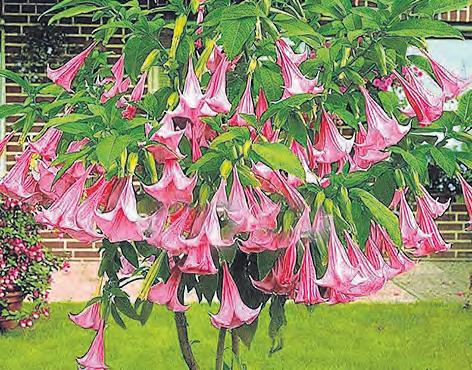

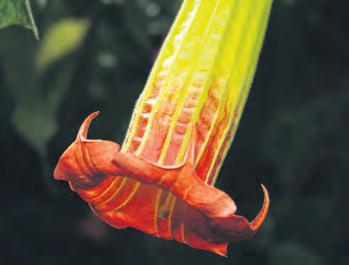
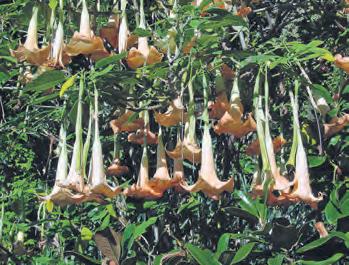

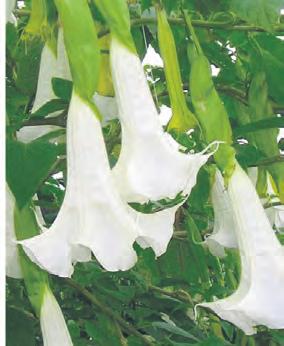
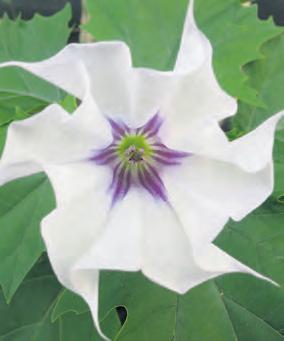
Brugmansia and datura are interchangeably called angel’s trumpets. They look similar, come from the Solanaceae family, and are toxic plants. However, brugmansia plants can grow up to 20 feet tall with larger, pendulous flowers that face downward, lasting longer.
The datura plant only grows up to four feet tall; its trumpeting flowers face upward; and its round, spiny seed pods self-sow easily. Brugmansia has smooth, elongated seed pods that do not self-sow. Datura flowers are usually white or white and purple, while brugmansia flowers are white, yellow, or peach.
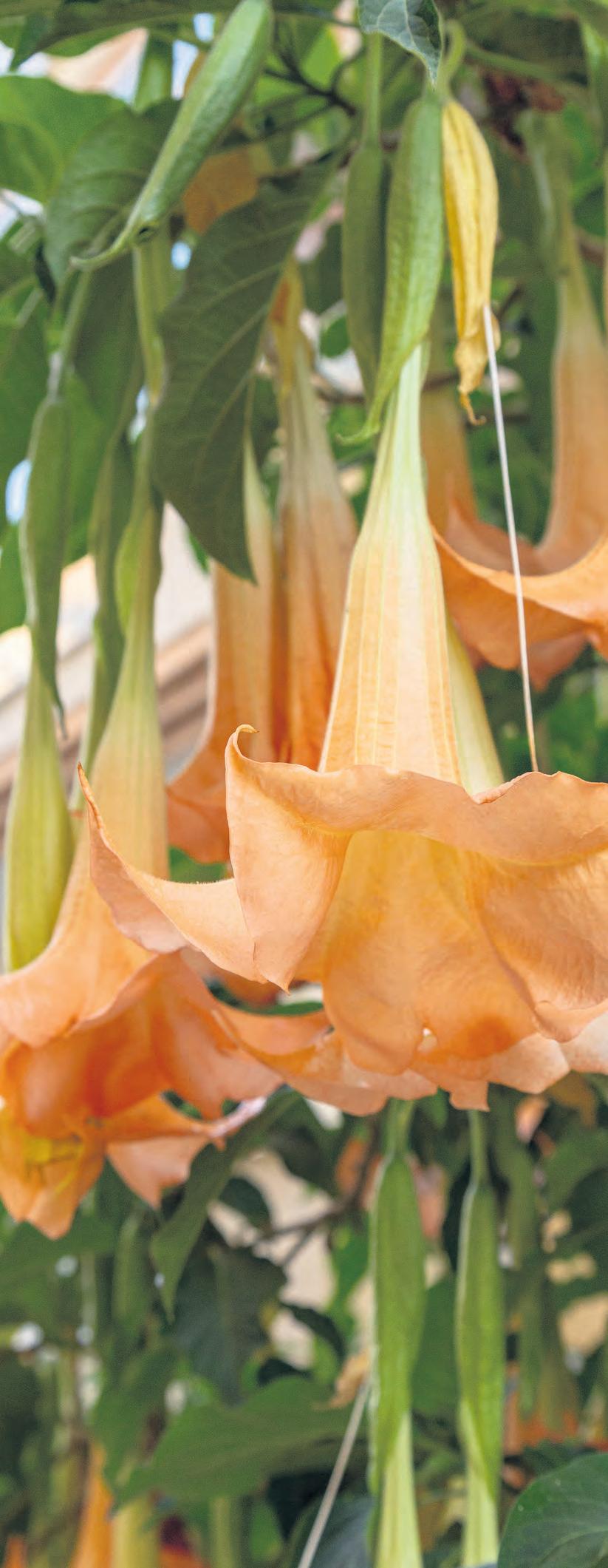
• The show-stopping hanging trumpet-shaped flowers of brugmansia (also known as angel’s trumpet) make it a delight for any garden.
• Grown either as a woody shrub or small tree, angel’s trumpet is a tropical plant that does best with full sun and ample water. Brugmansia is best planted in midspring when outdoor temperatures no longer drop below 50˚F at night.
• The plant will grow quickly, often between 24 to 36 inches a year.
• All parts of the angel’s trumpet plant are toxic to humans, dogs, and cats.
• Almost any soil will suit it.
• Needs moderate to warm temps; should not be kept outdoors lower than 50˚F.
Huge waiting lists and more land being switched to housing developments threatens to change the future of plots for ever
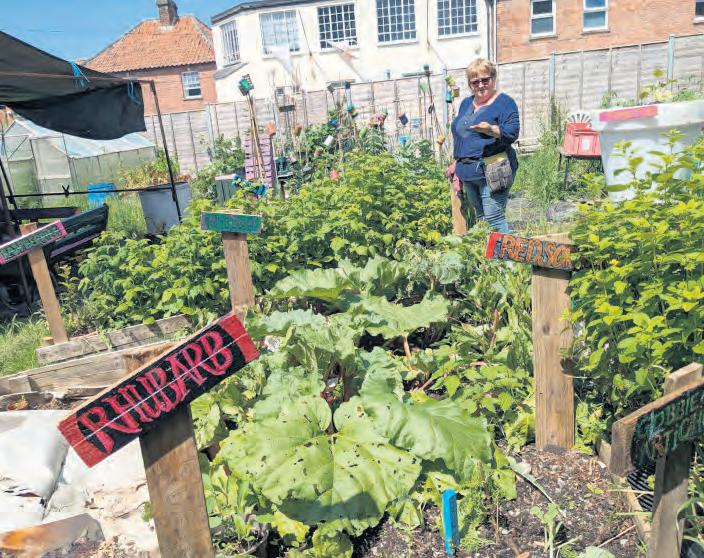
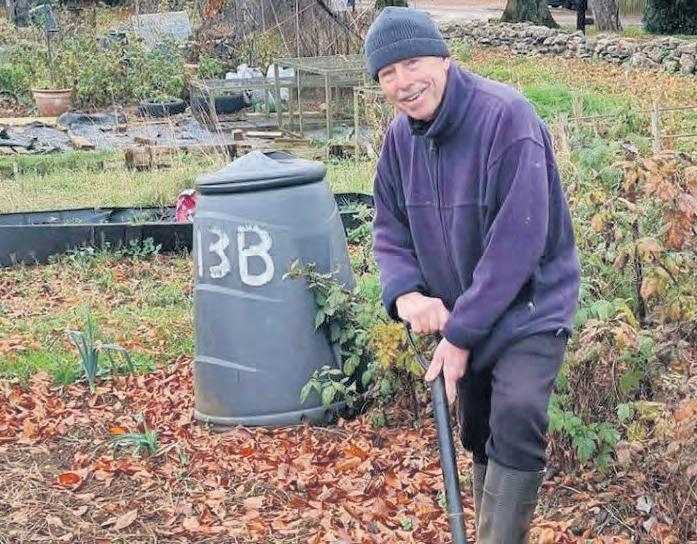
The drop in the number of allotments in the south west is about to have a catastrophic effect on communities throughout the area.
That is the view of new research for the Council For The Preservation of Rural England. While waiting lists for the gardening plots remains at an all-time high, the last 12 months has seen either a record number of allotments sites given over to housing developments or applications for change of use and it’s a trend which a number of organisations are saying is not only worrying but likely to increase.
The picture of availability of allotment plots continues to be mixed. Areas of West Sussex and Dorset are said to still have huge waiting lists. Brighton recently said it had 33,000 people on its waiting list.
Typically waiting lists are between two and seven years. Most allotments in the west country belong to either town or parish councils. Under Section 23 of Small Holdings and Allotments Act 1908, a duty is placed upon local authorities to provide areas of land set aside for allotments, where they perceive there is a demand.
In Devon most allotments are managed by private allotment associations or the local town or parish council. There is a six-year waiting list for plots which hasn’t improved for a long while as there are very few new allotments being made available.
A number of high-profile disputes in the area highlight the problems for allotment holders- and exactly what the allotments can mean to improve the community.
Existing allotment holders on the outskirts of Bath say it will be an
‘absolute disaster’ for the community if their allotment site owner goes ahead with his threat to terminate the lease on a long-standing allotment plot.
The Combe Down Allotment opened in 1894 but the current landowner has given notice to the Bath and North East Somerset Council of his intention to end the lease next year.
Campaigners want the council to issue a compulsory purchase order and for the allotment plots to become an Asset of Community Value which would allow them to buy the site. A spokesman for the allotment associations said the history of the site was one that allowed miners to grow their own fruit and vegetables in times of hardship and that there was still an element of the plots providing much needed food. It was an important community benefit, he said and if allowed to disappear would be a major loss,
One Somerset allotment shows the other side of the story – how plots provide not only food but strength to the community and health benefits. It is not just an allotment - for some the Growing Happiness project in Glastonbury is a lifesaver, a glimmer of hope. Every week more than 100 men, women and children go to the allotment to garden, meet one another, grow vegetables, paint and generally get out in the open for the sake of their health.
The young people do all sorts of activities and more than half of what they grow supports local food banks and those in need. It is a wonderful project, out in the open air, growing food, helping people and the environment and it is important for Glastonbury.
But now the project, in the old kitchen gardens at Glastonbury Abbey House, has to find a new space or face closure as early as this September. The organisers are making an urgent appeal to the local community to help them find a new space.
It would be a huge loss to Glastonbury; it is a joy to see so many people using the allotment, coming together and generally improving their mental health and wellbeing. That is why Growing Happiness, run by the award-winning The Volunteer Network in Glastonbury, is so important. Set up to help people post-Covid who may be struggling with mental or physical health or facing loneliness, it is a vital connection for some people and without it they will face further struggles.
Growing Happiness was set up to create a space for local people to come to the allotment, grow vegetables, chat and generally be part of something. Every Tuesday there is a women’s gardening group in the morning, mums and toddlers and a meet up session for remote workers in the afternoon. On Wednesdays it is the men who get together as well as young people and there are arts and crafts sessions in the afternoon. It has proved so popular in the town and now more and more people are using it. The allotment space was given for free by Glastonbury Abbey to The Volunteer Network, but they now need it back as part of a prearranged agreement.
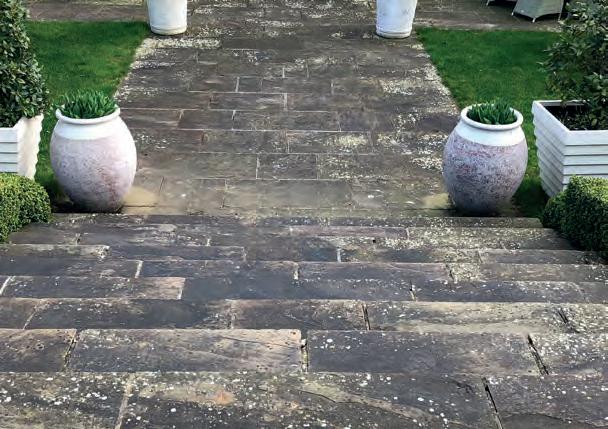





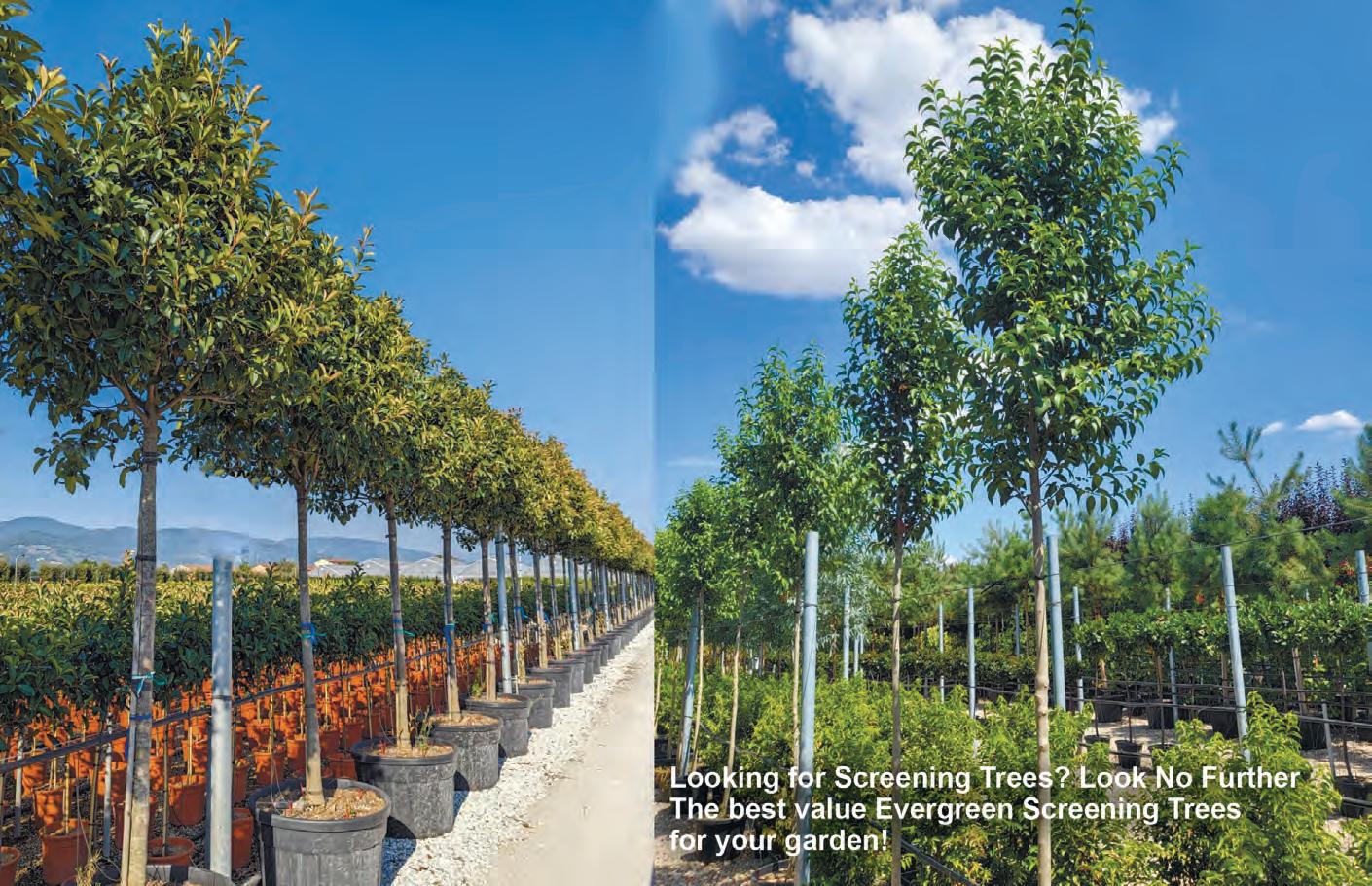



compiled by Vivienne Lewis
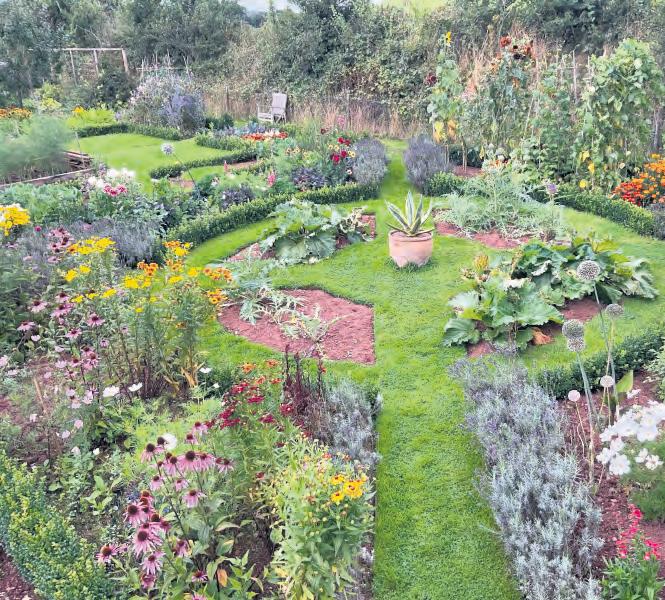
Make the most of these weeks of late summer to relax in one of the lovely, colourful gardens opening for nursing and caring charities, and perhaps get ideas for your own garden. We advise checking whenever possible before starting out on a journey as circumstances can force cancellations. www.ngs,org.uk
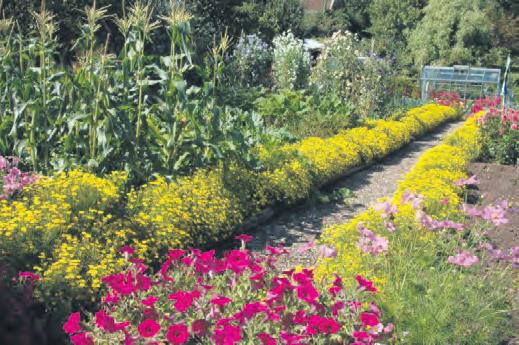
Kenn, Exeter, Devon, EX6 7XL
Opening for the NGS on Sundays 4th/18th August and Sunday 8th September, 1.30pm-5pm each day, six acres with lawns, borders, mature trees, formal parterre with lily pond, walled garden with colourful profusion of vegetables and flowers, palm tree avenue leading to summerhouse. Late summer colour with dahlias, crocosmia, agapanthus; cactus and succulent greenhouse, pelargonium collection, lakeside walk. Admission £6, children free.
Keymelford, Yeoford, Crediton, Devon, EX17 5JG
A new opening for the National Garden Scheme on Saturday 17th and Sunday 18th August, 1pm5pm each day, five acres of gardens and sheep enclosures surrounding a Grade II* thatched farmhouse in a mid Devon valley. The gardens are gradually being developed, with an enclosed box edged potager (vegetables, cut flowers and fruit), croquet lawn, small orchard, riverside walk and dell. A spring fed pond with exotic planting feeds a leat running through the garden down to the small river. Admission £5, children free.

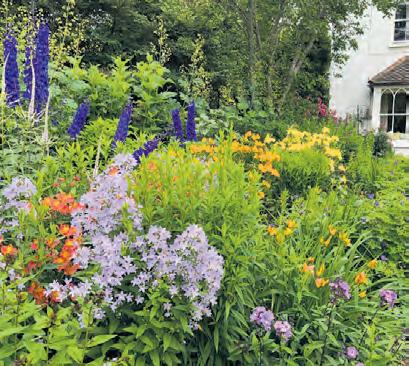
Wickham, Southwick Road, Wickham, Fareham, Hampshire, PO17 6HR
Opening for the NGS on Sunday 4th August, 1pm-5pm, this five-acre garden surrounds a house built around 1700. Since 2000 the owners have developed it in the Capability Brown style, exploiting its open aspect and mature trees. The sloping site allows for four interconnected ponds, providing different habitats, and an acre of rewilding meadow surrounded by uncut hedges. Admission £5, children free.
Wheatley Lane, Kingsley, Bordon, Hampshire, GU35 9PA
Opening for the NGS on Saturday 17th and Sunday 18th August, 1.30pm-5pm, a garden on a rural hilltop with panoramic views over the Alice Holt Forest and the South Downs. The sweeping mixed borders and shrubs are spectacularly colourful in late summer. The black and white border, now with bright red accents is a particular highlight. Admission £6, children free.
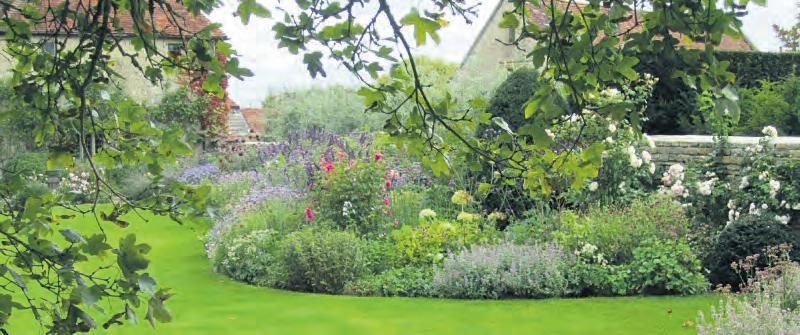

Phillips Hill, Marnhull, Sturminster Newton, Dorset, DT10 1NU
A new opening for the NGS on Sunday 18th August, 1.30pm-5.30pm, gardens surround the 16th century farm house and three renovated barns. Designed by Justin Spink, with colourful long borders, walled gardens, swimming pool area, cutting and vegetable gardens; espalier fruit trees, pleached hornbeam and weeping pears divide the areas; fields with mown paths and beautiful views. Seating and wheelchair access. Admission £8, children free.

Ashley Heath, Ringwood, Hampshire, BH24 2LZ
A new opening for the NGS on Saturday 17th and Sunday 18th August, 11am-4.30pm each day, a plantsman’s garden with paths meandering through different areas including architectural jungle exotics, bamboos and bananas, a woodland walkway with rhododendrons, fernery, grass bed, pond and hot gravel bed. Several secluded seating areas, lawn and traditional vegetable patch. Admission £4, children free.

2 Fitzgerald Road, Bedminster, Bristol, Somerset, BS3 5DD
Opening for the NGS on Friday 9th, Saturday 10th and Sunday 11th August, 12pm-5pm each day, an unusual and interesting city garden with a mixture of exciting plants and features, ponds, ferns and much more, including an Eden project style greenhouse with a collection of cacti.
Admission £4, children free.
Southrop, Lechlade, Gloucestershire, GL7 3PW
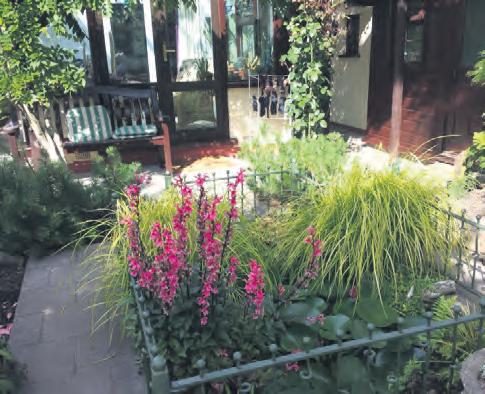

Kempley Dymock, Kempley, Dymock, Gloucestershire, GL18 2BU
A new opening for the NGS on Sunday 18th August, 1pm5pm, a four-acre wildlife friendly garden with views over open countryside, mixing naturalistic planting of native and specimen trees with ornamental borders, rose garden and cottage gardens, which can be explored from the large connecting lawns. Several ponds, productive apple orchard, woodland, wildflower meadows, and ancient horse chestnut. Admission £5, children free.

A new opening for the NGS for five consecutive days from Monday 5th August to Friday 9th August, 11am4pm each day, a wonderful kitchen garden on the edge of water meadows, carefully managed to ensure abundance from the land while protecting and maintaining the fertile alluvial soil. Vegetables, salads, herb garden, cutting gardens and polytunnels, suppling two restaurants on the site.
Admission £5, children free. A.I.

St Keyne, Liskeard, Cornwall, PL14 4SH
A newly created garden, planted during 2023, on the site of a former mill, opens for the NGS on Sunday 25th August, 11am-4pm, with a variety of young specimen trees, herbaceous borders, roses, small pond and water feature, all laid out on different levels on a gently sloping site with several seating areas to relax in sun or shade; gravel paths and some steps. Admission £5, children free.

Spending longer summer hours in the garden has had the effect of increasing the number of gardening questions and queries from our readers. If you have anything you would like help or advice with then email us at editorial@countrygardener.co.uk or write to us at Mount House, Halse, Taunton TA4 3AD
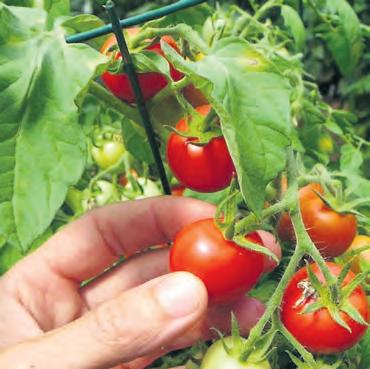
If I do not want my tomato plants to grow to a height of four feet (maximum) and dominate everything in the greenhouse, what can I do?
Sarah Evans Exmouth
The easiest thing is to plant smaller varieties such as bush tomatoes of the plant, and plan. Varieties such as the patio type ‘Red Robin’ are smaller but produce large quantities of fruit. You can also adapt traditional tomato varieties, make use of trellising and by cutting the tops off plants to force branching down the sides. As well as keeping the plant restricted, it can also improve the yield of the fruit. The trade-off here is the time it takes for recovery after each cut.

The last couple of years something has eaten my immature peaches off my peach tree. There are no remains left... no evidence, not even on the ground. I assume that it would either be a grey squirrel or a deer. How could I prevent this in the future?
Peter Collins Martock
This sounds like a deer problem. They seem to have a passion for peaches, plums and pears etc so this is where the culprit may come from. If you have deer accessing your garden it can be difficult to constrain them - they are determined and athletic and no simple fence or boundary wires will be totally successful in keeping them out once they have a taste for the fruit. One way to keep deer from eating plants is to use tree protectors made from wire or plastic that can be placed around individual trees, especially young fruit trees. These should be at least six feet high for older trees and can be quite expensive, so you need to decide how badly you need to keep your fruit safe.

Three years ago, I planted two different types of fig trees in the same area of my garden, I guess within two feet of each other. One plant was from my brothers’ trees in Exeter -type unknown. The other came from Otter Nurseries and was a different looking plant , smaller and perhaps less healthy looking. The one from my brother has produced figs for the last two years while the second has yet to produce any figs. My guess is that I need a second plant of the same kind to get figs on the second plant.
Most fig trees need to be between two and four years old at least before they can produce fruit. Some would say even longer so there’s always a patience issue when it comes to fig trees. Your Otter-bought tree clearly needs a few more years before it is mature enough and this probably isn’t a pollination issue . The one from your brother’s home may have been older when you got it or it may have come from a cutting from more mature wood or it is simply a variety that has less time to full maturation.
For the one that is not producing, give it another year or so. Just in case, add a bit of bone meal. Figs are very susceptible to too much nitrogen, which can produce lots of foliage and little fruit. Bone meal will provide phosphorus, which helps boost fruit production.
Why is the young fruit dropping off my tomato plants when the whole plant looks so healthy and as if nothing is wrong with it?
Hazel O’Brien Dorchester
This is caused by a pollination issue. Mostly, tomatoes are wind pollinated, but in damp/rainy weather or very hot weather the pollen gets sticky and does not travel well. You may need to give it some help. One option is to pollinate tomatoes by hand. Not only is this easy but it can be quite effective. Pollen is normally shed from morning to afternoon, with midday the most optimal time to pollinate. Warm, sunny days with low humidity are ideal conditions for hand pollinating. However, even if conditions are less than ideal, it never hurts to try anyway. Often you can simply shake the plant(s) gently to distribute the pollen. That’s all it needs to make sure the fruit is better set.
Why does my lawn get so much thatch when we go to a lot of trouble to collect clippings. I have read how great it is to leave grass clipping on the ground for soil nutrients. We pick up our grass clippings and still have too much thatch. What are we doing wrong?
Lewis
Porter Liss
Thatch is not caused by lawn clippings so that is not the reason here. This is a common misbelief. Dense, dry thatch in your lawn occurs when dead material builds up from the bottom of the lawn, rather than the top. Common causes of thatch are overwatering or overuse of high nitrogen fertiliser or mowing the blades to short and not giving fresh grass roots the chance to grow and flourish.
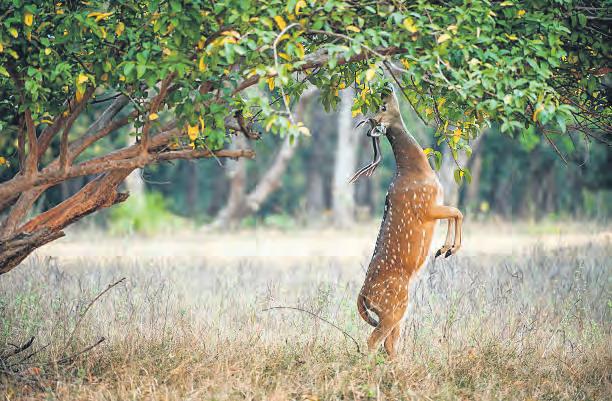
Is there a natural poison you can recommend for use in gardens? We have had discussions with pest control companies and every poison they recommend we have to turn down on environmental grounds. Meanwhile the problem is just exacerbating. I am not sure whether this is, technically, a gardening question, but would greatly appreciate your suggestions.
Sam Oakley Barnstaple
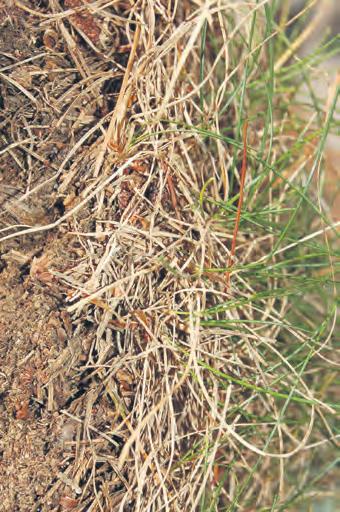
Rat traps are one suggestion in gardens and its normally a successful one once you determine the ‘runs’. Specialist pest control companies should be able to help with a natural poison if you are set against the traditional options. Some gardeners particularly on allotments advocate a mixture of equal parts of flour, sugar and either baking soda or boric acid (Borax laundry detergent) is an organic, environmentally friendly and effective rat killer. Place it in areas that the rats go and they will eat it. The baking soda one is supposedly also safe for domestic animals as it kills the rats by swelling their stomach, and cats and dogs can relieve the swelling by belching.
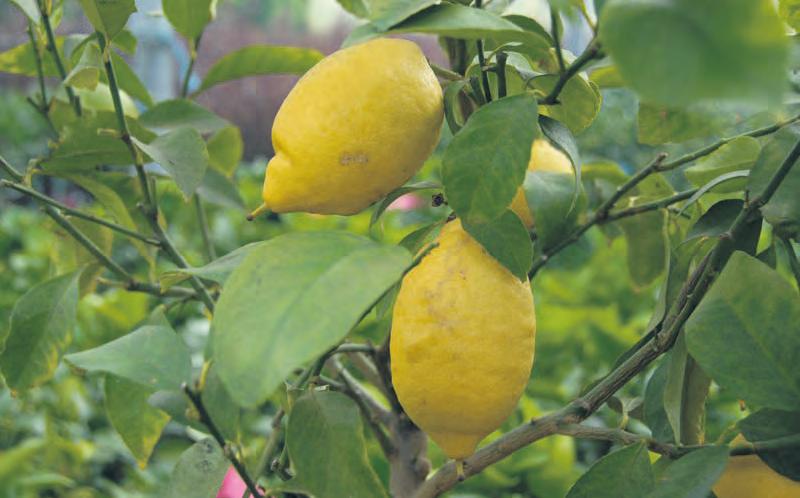
I have a lemon tree that has produced loads of flowers and small lemons. However, do I thin out fruits? Also leaves appear to be dropping off. Can you please advise any cures?
Adam Smith Petersfield
Lemon trees typically thin their own fruit rather well, but if it seems a little heavy for the tree, you can snip off any excess fruit. Typically, you want to see five to eight inches between each fruit.
If the lemon tree is losing leaves, this is normally a sign that it is under watered. While lemon trees are in fruit and in blossom, they need more water. Increase water to the tree until the fruits are firmly set, and then you can go back to your normal watering levels.

I’ve heard a lot about sustainable gardening. Is tidiness the enemy of it?
Marion Porter Poole
Not at all. Gardening sustainability is about sharing space and accommodating the nature that wants to share your garden. So if you are a tidy gardener who doesn’t like nettles, it’s a mindset to not look at them as something that shouldn’t be there but to look at them as forage for butterflies.. and then you are no longer annoyed with them.
Please can you recommend a green manure for planting on our quite large vegetable patch over winter - to cover the bare soil which will be vacated by the onions and carrots crop.
Linda Grieg
Taunton
There are several different green manures that you can use. Choosing the most beneficial one really depends on what you are trying to achieve.
If your soil is on the heavy side then a Grazing Rye might be useful. It has extensive roots that will improve the soil structure. Alternatively you might just have time for a crop of buckwheat which can be dug in at the first frosts. This has a very deep root system that will break up heavier soils and sub soil. Crimson Clover is better on sandy soils to add water retentive humus. On soils that are low in fertility then Phacelia is particularly useful and not too troublesome to dig in.

The leaves on my allium plants are turning brown at the tips. The allium have not flowered yet but there are buds on it so, does that mean there is still some hope?
Alma Newton Portsmouth
This is typical of alliums. They often start to brown off just as they come into flower. It is caused by environmental conditions and nothing to worry about. The best way to grow them is to plant them in herbaceous borders among leafy perennials which will hide the browning foliage while you get to appreciate the flowers.

I am helping my parents landscape their new property. The previous owners didn’t plant anything. They want to landscape the north and west side of the house. The north side is full shade, and the west side is what I would call dappled to full shade. Do you have any suggestions for shrubs that would give winter interest? It’s rather drab where they live.
Cate Anderson Poole
For shady sites on the north or east sides of buildings, consider broad-leaved evergreens. These trees and shrubs have leaves that look like those of deciduous trees. The only difference is that evergreen leaves stay on tree branches all year long. Broadleaf evergreens do best in locations that are protected from strong winds and hot afternoon sun, since both factors can cause browning of leaves. Here are some quick choices for shade-tolerant shrubs that don’t lose their leaves: American holly (Ilex opaca) grows to 30 feet tall and 20 feet wide and is dotted with red berries.
Japanese pieris (Pieris japonica) grows to five feet tall with panicles of spring blooms.
Boxwood (Buxus sempervirens) wide with dark green leaves.
Yew (Taxus spp.) has dark green needles and bright red berries.
I have two orchids. One of them is a mini. It’s summer so why have they dropped all their flowers but kept their leaves which look great and have even sprouted new ones. But that’s it. No flowers. How do I get them both to blossom again?
Bristol
They are probably both phalaenopsis and there’s no need to be concerned. Keep taking care of them in terms of watering and where they are kept and they will bloom again. The old bloom stems may well flower again if they stay green.


I have a yellow substance which appears on the top of my mulch material which comes from hardwood shavings in the work yard. It is a slimy substance which doesn’t look healthy especially when it turns brown and when water hits it puffs out a dust. Is this harmful to the plants and should I take it out of the garden?
Mark Stevens Chepstow
There’s a lot going on here but the chances are this is just the mulch breaking down the soil and feeding the soil. It won’t harm the plants and will be beneficial to them.
Somerset gardener Chris Parsons recently had the chance to compare the grass cutting regimes when it came to his overgrown orchardand the result was never in doubt
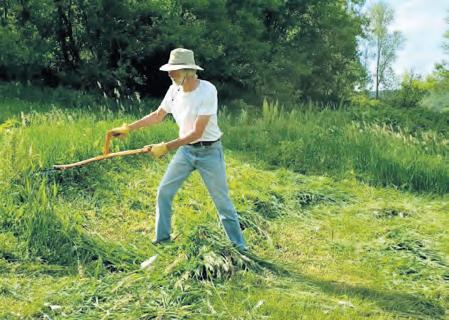
In June I had a very specific problem in my orchard- very long grass. And I mean very long!
It had got into the state for reasons I won’t bore your readers with but had a lot to do with broken mowers and overseas travel.
The grass was too long to mow and it led me into a debate which has since then intrigued me- should I strim it or scythe it?
Which system would come out on top–and why.
Well for me the answer is an obvious one – scything wins every time.
As great as strimmers are, I can guarantee that you’d be very hard pressed if you had to mow any sizeable garden with a strimmer alone. Then there’s other factors.
It’s noisy, distressing to animals, slower than scything and damages the grass much more.
There’s room here for a personal note. I first started using a strimmer about 30 years ago and it wasn’t a pleasant experience.
Those early petrol strimmers were heavy, noisy and smelly, and there seemed to be something savage and brutal about flinging bits of chewed up weeds and grass all over the pace, and I couldn’t help thinking about those tiny creatures living in the undergrowth wondering what on earth was happening.
And a part of my gardening persona still yearns for those peaceful days spent quietly edging and hoeing and trimming, conveniently forgetting the hours of backbreaking labour cutting back an overgrown bank with shears!
So back to my experience to scythe my orchard. I had a skilled expert – and local-who in a few hours over three days reduced that awfully long grass into manageable piles of hay. It was silent, nostalgic and wonderful. It was also a great end result in terms of the quality of the cut which yes did surprise me.
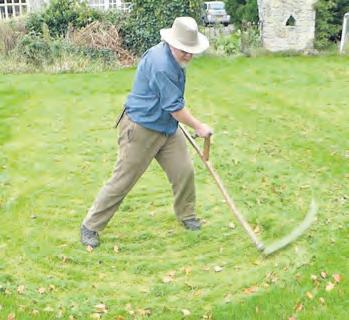
There is of course room for strimmers in out gardens I suppose. They do a great job tidying up but this recent experience of mine has left me very much anti them. There’s a lot of evidence to support what might be a bit of an ‘old fogies’ view. The casualty rate from scythes is very low (not quite zero) as most wildlife are able to get out of the way and avoid contact with the blade as it passes only once in a narrow slice though the grass under close supervision by the scyther. Strimmers are exceedingly tiring to use- this to the extent that prolonged use causes a whole range of injuries and damage to the body and health of the operator. There are no exposure limits for scything other than I assume after a while it can be quite tiring.
On a purely practical level a competent scyther can expect to beat the work rate of a strimmer and to mow to a higher and neater standard. It’s been proved time and again in for example the ‘mow off challenge at the Somerset Green Scythe Fair against some pretty determined and proficient brush cutter opponent.
Just the noise of petrol engines can be distressing to some animals especially dogs and horses even leading them to take flight. This is particularly acute in confined spaces. London Zoo adopted scythes for tiding animal enclosures to eliminate this stress which has badly affected some of the animals – anteaters apparently in particular.
With a scythe you can mow on a Sunday morning without disturbing your neighbours. In fact in any situation mowing quietly with a scythe is more considerate of the enjoyment of a summers day without the firing up of mower engines.
So scythes- safer, quicker, no fossil fuels, no noise pollution, photogenic and a better quality cut. I don’t think this will change things but I have found writing it very therapeutic.



Emma Flood raves about the underrated, but reliable damson which doesn’t seem actively sought after but still has a passionate following from those who love the fruit.
WHY ARE DAMSONS THE FORGOTTEN FRUIT?
What fruit tree, asked a friend recently, would I recommend that wasn’t too big, looked good, didn’t demand a lot of work but produced a large, reliable harvest that was, most importantly, useful in the kitchen?
I could see her waiting for me to suggest a particular apple, pear or plum. A damson, I said. Definitely a damson!.
What surprises me is that, even in the UK where the fruit has a long and noble history—especially in places where a damson festival has recently been revived—this fruit isn’t more actively sought after.
Most people seem to get to know its charms by moving to a house where one already grows in the garden. Yet, my damson harvest is the most reliable of all my fruit trees and the most eagerly anticipated.
It’s true that, because of their tartness, you’re unlikely to want to eat damsons straight off the tree, but we get a good harvest every August unless the blossom was damaged by a particularly bad late frost, the trees survive with barely any maintenance and, as well as making delicious preserves and pies, damsons can also be used in place of sloes to make a gorgeous damson-flavoured gin liqueur (a real favourite in our house).
CULTIVATION AND VARIETIES
Textbook advice is usually to put a tree in well-drained soil somewhere warm and sunny, preferably facing south, protected from frost. However, for many years our damsons were in deep shade for most of the day because of a neighbour’s (now happily demised) Leylandii. We still got excellent harvests.
The damson copes with most soils, even heavy clay, though if yours is very sandy or gravelly you’ll need to improve it with plenty of organic matter before planting. What you do need to ensure is that it isn’t in a position where it will suffer strong winds or bad frosts which will strip off the blossom. However, if yours is a very exposed garden, there’s no need to despair. A damson can do well if planted where it enjoys some protection from a hedge or tree, especially if you choose a frost-resistant cultivar like ‘Farleigh Damson’.
Another popular variety is ‘Merryweather’, which produces larger fruit than the average damson, sweet enough to be eaten raw, and is particularly suitable for colder, wetter areas. Expect your damson to grow to around 10-15 feet. ‘Shropshire Prune’ (also known as ‘Prune Damson’) is one to choose for neat, compact growth, or you could look for a tree grown on Pixy rootstock to restrict growth to 8-10 feet (2.4-3m).
Damsons are self-fertile, so you don’t need to plant more than one. However, it is a useful pollinator of other plum trees (like apples, they are divided into different pollination groups so make sure you choose one with a similar flowering period) and, like all selffertile cultivars, is likely to produce a larger crop when cross-pollinated by another tree.
PRUNING A DAMSON
Another plus is that, once mature, a damson needs little pruning. It does generate quite a lot of twiggy growth though, which means the tree becomes congested with old wood over time, so every year I cut off any of the spindly bits that have died back. (Dead, diseased and crossing branches should also be removed.).
It’s also possible to do this job while picking the fruit. Pruning during the winter increases the chance of the tree becoming infected with silver leaf fungus so, like all plums, damsons should only be pruned from late spring to early autumn - April to September.



• All year round barbeques and parties
• Children can play outdoors come rain or shine
• Cats and Dogs love the cover
• Patio tables and chairs stay dry - No need to store away for most of the year
• Any colour and any size to suit you and your property
• Supply and install or Supply only
• D.I.Y kits available - Trade Discounts
For a FREE quotation or brochure call 01647 432321 or visit www.allweathercanopies.co.uk
Covering the South West - Somerset show site open for viewing




The little garden centre with a big heart
Quality home grown plants and gardening sundries at affordable prices
Seasonal Bedding, Perennials, Shrubs, Trees, Exotics, Houseplants & More!
Open 9am - 4pm Mon to Sat 10am - 4pm Sun www.chestnutnursery.org.uk 75 Kingland Road, Poole, Dorset BH15 1TN
Tel: 01202 685999
Facebook: chestnutnurserypoole
Instagram: chestnut_nursery Registered
Reach a passionate and affluent audience of gardening enthusiasts
Over 100,000 copies distributed every month
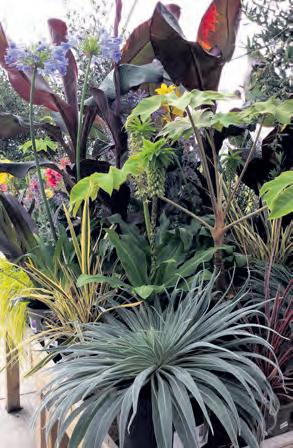









If you would like to advertise your business or service in our Dorset magazine, please contact corina@countrygardener.co.uk Tel: 01823 410098
or
Tel:
824629 enquiries@azaleacentre.co.uk www.azaleacentre.co.uk


I love the phrase which is often associated with August- “the garden is now all that it will be”.
Technically perhaps not 100 per-cent accurate as there are still things to appear in the late summer English garden - but the sentiment is a good one.
To me it means the gardener has stopped battling against everything -trying to keep up.
The August weather also means that the garden has become lazy. Stems flop over paths, leaves are nibbled and imperfect and everywhere there seems to be the fading glamour of flower heads running to seed. It is of course the transitional month because as summer fades then the first signs if autumn creep in - unwanted as they may be.
In this the final month of summer, the garden takes on a honeyed edge of gold. Berries are starting to fill out and hang heavy from the trees.
It is time also for the first harvest celebrations. The vegetable garden overflows as everything seems to ripen at once and has become a marketplace for browsing and plucking – courgettes, fennel and raspberries. Certainly, August is a bittersweet time and a month writers have worked hard at calling ‘in betweenness’.
High summer is July, September is late summer and in the middle is August. It’s a month weather wise which perhaps we look forward to the most with promises of heatwaves, endless blue skies and lazy holidays only in recent years to be disappointed.
It’s too often a nothing month in terms of weather but the gardener will take some compensation with an August harvest of peas and beans, luscious salads and sun warmed tomatoes and tasty potatoes.
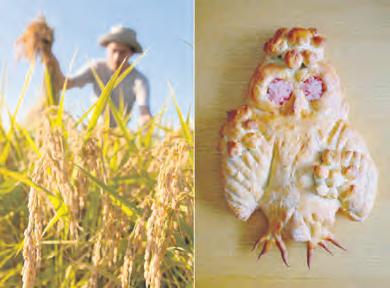
Also known, as Loaf Mass Day, Lammas Day is when the grain harvest is celebrated. A time for making bread and corm dollies. In early Christianity, the first loaves of the season were blessed by the church during mass. In some traditions, this day honours the Celtic god, Lugh.
WEATHER HISTORIAN AND LOVER OF FOLKLORE LOOKS AT WHAT AUGUST BRINGS TO THE GARDEN AND SEES IT AS A MONTH WHEN FINALLY GARDENERS CAN STOP ‘BATTLING’
In medieval times this feast day was taken as the start of autumn, and it falls precisely at the end of St Swithin’s Day’s 40-day forecast of wet or dry weather. It is the most important day in August weather lore.
It is another day which is supposed to set the weather for the coming period and gives some considerable hope if the summer had been wet.
“All the tears that St Swithin can cry St Bartelmy’s mantle will wipe dry” - a dry autumn will follow a wet summer.
St Bartholomew has his finger in all sorts of harvest time pies also.
As we reach the end of summer, minds inevitably turn to winter and how harsh or otherwise it will be.
The patron saint of gardeners celebrates his feast day on August 30th . he was an Irish hermit who moved to France where his charitable work and horticultural expertise became renowned. He died in AD670.
Count the fogs in August and that will tell you how many snowfalls the winter will bring while a dry first week in August brings a harsh winter.

August is peak season for blue butterflies, with six of the UK’s nine regular breeding species on the wing. Chalkhill blues are habitat specialists – to see them, visit a chalk downland in southern England managed for nature. There are also isolated colonies in Devon and Dorset.
Focus your search on sheltered areas where the microclimate at grass level is warmer. Mark Cocker, in his book A Tiger in the Sand, describes how these baby-blue butterflies gather in sunny spots, “their wings opening and closing like so many pale winking eyes”. There’s still time to take part in the Big Butterfly Count. Simply record the species you see over 15 minutes before Sunday 8th August and add your counts to their website. Butterflies are important indicator species, showing how ‘healthy’ the environment is so all records are useful for research.
In August, with garden pests including aphids often running riot, ladybirds can quickly become a gardener’s best friend. Adults are active at this time of year and the next generation are often starting to emerge from the pupae.
Young stoats born in spring are now splitting up to hunt for themselves, after relying on their mothers’ hunting prowess throughout the summer. They are perhaps unlikely to catch many adult rabbits – the favourite prey of stoats – but naive baby rabbits and small rodents had better watch out.
As well as finding enough to eat, the newly independent stoats must dodge everything from foxes to tawny owls, grey herons and pet cats. Few survive their first winter, which is why stoat litters are so large, with up to a dozen kits.
Look out for swallows and martins gathering in large flocks this month before they return to Africa for the winter. They’ll often perch in large numbers on telegraph wires, which makes a wonderful sight.
August is a great month to spot house martins swooping after insects on the wing. These summer visitors are now well into their breeding season, with each pair raising up to three broods.
The juveniles will remain close to the nest site after taking flight and will often continue to roost in the nest for several weeks. Fledged young from the first brood sometimes give their parents a hand feeding new chicks.
House martins will nest in small colonies where they can, with nests usually occupied from one year to the next, although rarely by the same two birds. Males often return to the colony they fledged from or close by, while females tend to settle several kilometres away.
Sadly, house martins are becoming a much scarcer sight in the UK, with numbers declining by 57per-cent between 1969 and 2018.
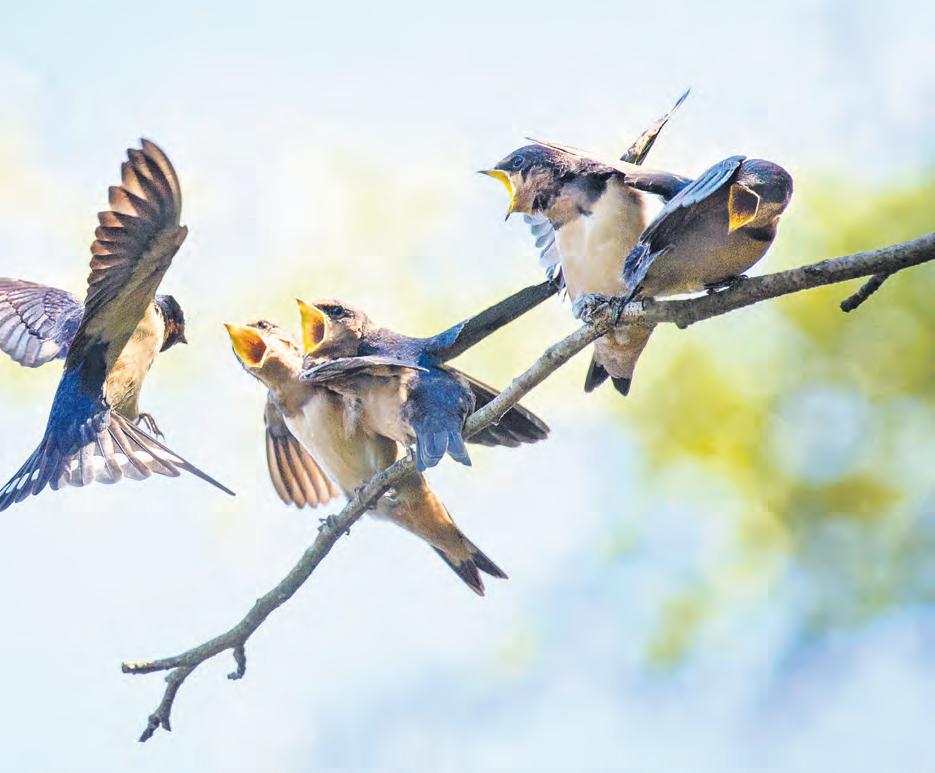

As summer progresses the hedgerows are laden with ripening nuts and berries. Look out for hazelnuts, elderberries, sloes, haws and rose hips
If you do a spot of foraging, remember to leave plenty for the wildlife that relies on these to see them through the autumn and winter.
Why not plant a fruiting and flowering hedge instead of having a fence or wall in your garden? Hedges provide important shelter and protection for wildlife, particularly nesting birds and hibernating insects, as well as food through the year.
Swathes of heather look stunning this month. The hardy shrubs turn entire moors purple, especially on estates managed for grouse shooting. Of the three widespread species, bell heather wins hands down for knockout visual impact. It is an intense magenta, much bolder than the mauve of its relatives.
The flowers, which hang in bunches, are bell-shaped with four prongs around the rim. They produce copious nectar, so hum with insects. Bell heather prefers drier areas than other heathers, such as wooded lowland heaths and coastal clifftops.

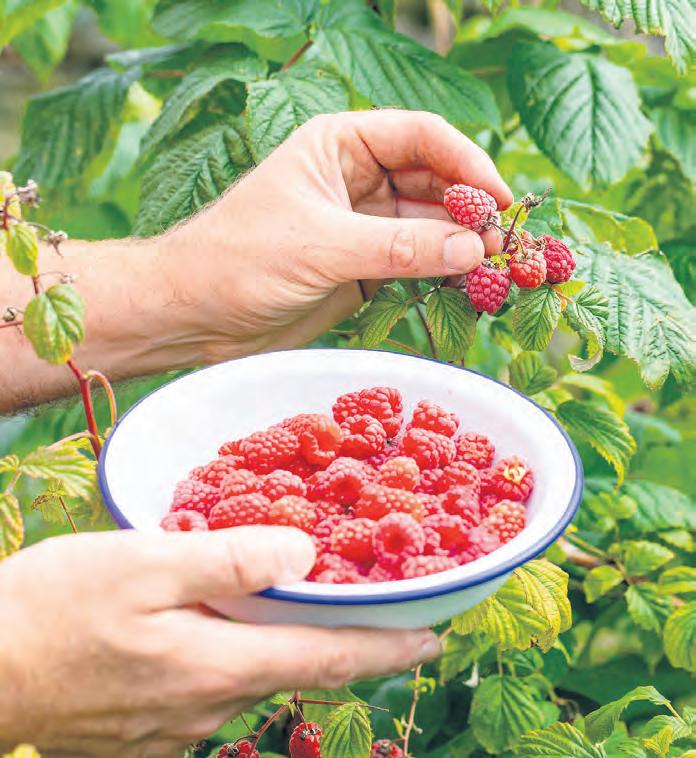
Delicious, succulent, easy to grow and often heavy cropping,raspberries have well and truly earned their title of fruit of the month. There are two distinct types of raspberries- those that fruit on stems (called canes) made the previous season and the so called summer fruiters and those that fruit on canes that have grown in the current spring and summer and carry their crops later as a result and known as autumn fruiters.
The advantage of raspberries over strawberries is that they freeze well so there is no reason to be embarrassed by a glut.
Plant new canes in the autumn and be ready to replant after a few years as they will eventually succumb to yield reducing virus. Summer fruiters are pruned immediately after cropping, cutting out all the new canes that have borne fruit and tieing in the new ones. Raspberries are perhaps the most rewarding of all fruit to grow and to be enjoyed in the August sunshine.



Church Farm Close Park
Nestled within the beautiful New Forest National Park, and in close proximity to Southampton Water, with bus stops located near the park entrance.
• Prices start from £179,000
• 2 park homes available
• Plots available
Hamble Park
Hamble Park is situated near to the River Hamble, in the village of Warsash, nearby to many local places of interest to visit.
• Prices start from £299,500
• 2 park homes available
• Plots available
WIN £100 IN RHS GIFT TOKENS
Our popular gardening themed crossword is compiled by Saranda which over the past year has become enormously popular with readers. The winning entry to be drawn by us will receive £100 of RHS gift tokens. Completed entries should be sent to Mount House, Halse, Taunton, Somerset TA4 3AD. Closing date Friday August 16th. The June issue winner was Maureen Little from Portsmouth.

It’s a busy time for gardening clubs and associations with lots of high summer events. It’s also a question of planning visits and talks for later in the year and even into next year. Remember to share your club events with a wider audience by taking advantage of our traditional free service which lists events, meetings and outings. Send your information to timeoff@countrygardener.co.uk
27TH/28TH
Cherry Tree Nursery SHELTERED WORK OPPORTUNITIES PROJECT email: maria@swopcharity.org.uk
31ST
Warsash Horticultural Society MINI-SHOW - PELARGONIUMS & OTHER PLANTS
Details on 01489 573755
2ND
ACROSS
1. Bearing bristles or thorns (6)
4. A tall, tropical grass with hard, hollow stems (6)
8. Somewhere to hang your titfer! (6)
13. Fungus sometimes called tippler’s bane (3, 3)
14. Garden produce such as parsnips, turnips and carrots (4, 10)
16. An agricultural worker (4, 8)
17. Person who sets one free (8)
18. Genus of plants such as morning glory and bindweed (7)
19. Centranthus ruber or kiss-me-quick (3, 8)
22. Erythronium or trout lily (6, 6)
23. Genus of water parsnips (4)
27. A green vegetable or tall, thin person (6, 4)
29. Mixtures of vegetables cut into little pieces (10)
31. The bristles or beards of oats and barley (4)
32. Peltate (6, 6)
37. Cooking ingredient made from greenhouse produce (6, 5)
38. Melaleuca alternifolia (3, 4)
40. A genus of flowering plants in the coffee family (8)
41. Deciduous shrubs such as witch alders (12)
43. An intense look that can be alarming (1, 8, 5)
44. Difficult to understand because enigmatic or mysterious (6)
45. A plant of the dock family with acidic leaves (6)
46. Candytuft genus (6)
47. John ______ (1545-1612), English herbalist (6) DOWN
1. Pink-flowered member of the pea family (8)
2. Begin to grow and draw nourishment from the soil (4, 4)
3. Plot of land used for farming (12)
5. Genus to which sweet flag belongs (6)
6. Common name of Lewisia rediviva (10)
7. A melon named after an Israeli kibbutz (4)
9. It’s almost certain to succeed (1, 4, 3)
10. Ramallah and Rafah are two cities where they live (12)
11. A person with refined tastes in food and wine (12)
12. The family to which mignonette belongs (10)
15. On fire (6)
20. Name given to Leucanthemum vulgare (3, 5)
21. A trellis on which a fruit tree is trained to grow flat (8)
24. Fibre from North Africa used for making cords and baskets (7, 5)
25. French liqueur distilled with bitter orange (5, 7)
26. Unable to keep ones temper or mislay a busy lizzie! (4, 8)
28. In pathology, readily stained with basic dyes (10)
30. Alternative name for cornflower (10)
33. Plants of a large genus including Michaelmas daisies (6)
34. Dracaena trifasciata is sometimes called __ ______’s sword (2, 6)
35. A difficult choice from three unfavourable options (8)
36. The pod of a pea (8)
39. Bacchic rods entwined with ivy and vine shoots (6)
42. Proprietary name of Jamaican tangelo fruit (4)
Shaston Gardening Association MONTHLY MEETING www.shastongardeningassociation. weebly.com
3RD
Burley VILLAGE SHOW Manor Park. 12.30pm www.burleyvillageshow.co.uk Uplyme & Lyme Regis Horticultural Society SUMMER SHOW 2pm - 5pm. www.ulrhs.wordpress.com
5TH
Highcliffe Horticultural Society ‘PLANTS FOR A CHANGING CLIMATE’ - MARTIN YOUNG Details on 07769 748187
Wimborne Gardening Club MONTHLY MEETING
Details on 01202 880116
8TH
Petersfield Gardeners’ Club MONTHLY MEETING www.petersfieldgardenersclub.com
9TH
Blackmore Vale Bonsai Group MONTHLY MEETING Details on 07837 781744
14TH
Totton & District Gardeners Society ‘GARDEN LEPIDOPTERA’ - STEVE OAKES email: totton.gardeners@btinternet.com 16TH
Parkstone Gardeners’ Society ‘THE BOTANICAL JUNGLE GARDEN IN POOLE’ - MIKE CLIFFORD www.pgsgreenfingers.co.uk
21ST
Warsash Horticultural Society CHEESE & WINE EVENING Details on 01489 573755 24TH
West Moors Horticultural Society SUMMER SHOW Details on 01202 871536

Are you part of a garden club or society?
Please send us your diary for the year - we’d love to include your talks and shows
Send them into us by email giving us 10 weeks notice of the event: timeoff@countrygardener.co.uk or by post to: Mount House, Halse, Taunton, TA4 3AD.
ACCOMMODATION
Secluded cosy cabins & lodges in wooded valley running down to Wembury Bay & SW Coastal Path

Plymouth, Dartmoor & lovely South Devon Villages & Towns in easy reach. Pets Welcome. Forest School. Tel: 01752 862382 www.churchwoodvalley.com
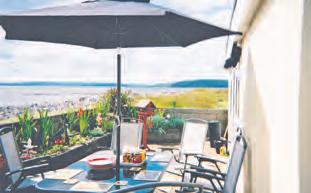
Carmarthen Bay South Wales Seafront chalet situated on estuary. Sleeps up to 6. Seaview. Well Behaved Dogs Welcome Free of Charge. Free WIFI. Open from 1st March - 31st Dec. For Brochure
Tel: 01269 862191
GLORIOUS NORTH DEVON. Only 9 cosy caravans on peaceful farm. Wonderful walks in woods & meadows. Easy reach sea, moors & lovely days out. £125-395pw. Discount couples. Nice pets welcome. 01769 540366 www.snapdown.co.uk
BOSWORLAS, ST JUST.
Cosy Cottage sleeps 2-4. Please email info@bosworlas.co.uk for availability
ACCOMMODATION HOLIDAY COTTAGES
WYE VALLEY/FOREST OF DEAN. Fully equipped single-storey cottage with two en-suite bedrooms. Wi-fi.Recently awarded Visit England 4-star GOLD. Rural retreat, shops/pubs one mile. Enquiries welcome. AS SEEN ON ESCAPE TO THE COUNTRY! Tel: 01594 833259 www.cowshedcottage.co.uk
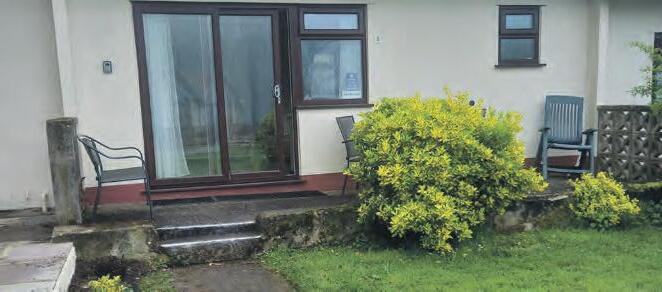
HOLIDAY COTTAGE SIDMOUTH, DEVON
A quiet holiday bungalow near Sidmouth, overlooking the Donkey Sanctuary. Ideal for walkers and nature lovers. Sleeps 4. Bookings from April to the end of October.
jandtmercer@gmail.com www.sandwaysholidaycottage.co.uk 07842 514296
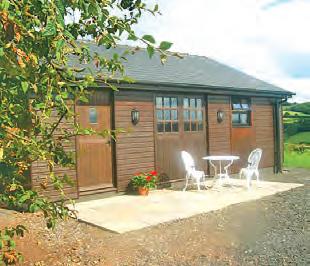
Peace, Privacy, and Stunning Views!
4* Delightful cosy cabin for 2, nestling between Wye and Usk Valleys. Shirenewton village & pubs close by. Wonderful walks, splendid castles, bustling market towns. Perfect for all seasons! Tel: 01291 641826 Email: lynne@bryncosyn.co.uk www.bryncosyn.co.uk
ACCOMMODATION WITH BEAUTIFUL GARDENS
NORTH DEVON NEAR CLOVELLY. 3 delightful cottages situated in 12 acres of idyllic countryside. Sleeps 2-4. 1 Wheelchair friendly. Brochure: 01237 431324 www.foxwoodlodge.co.uk foxwoodlodge@outlook.com

Near Stratford-upon-Avon Lovely self-catering cottage in peaceful location: large garden. Sleeps 2. Perfect for famous gardens, NT properties & Cotswolds. Tel: 01789 740360 www.romanacres.com


Gloucestershire Quality Bungalow B&B
Ensuites, rural, large garden, paddocks, sheep and fruit. Ideal Cotswolds, Malvern’s, Forest of Dean, cycle storage, ample parking, Wi-Fi £42 p.p.p.n.
Tel: 01452 840224 sheila.barnfield1960@gmail.com

A range of over 200 greetings cards and prints from the flower paintings of ANNE COTTERILL We sell to both individuals and trade. No order too small. Contact us for your free catalogue.
Mill House Fine Art Publishing, Bellflower Gallery, Market Place, Colyton, Devon EX24 6JS
Tel. 01297 553100 info@millhousefineart.com www.millhousefineart.com

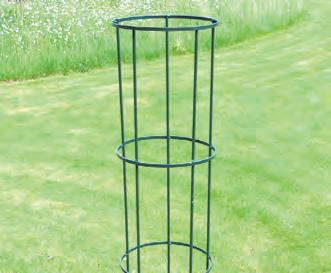
GARDENER’S BLACKSMITH jonne@jonne.co.uk 07770 720 373






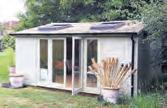
www.thegardenersblacksmith.co.uk
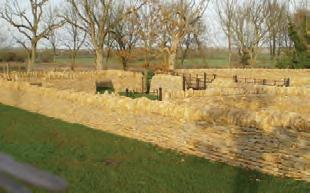


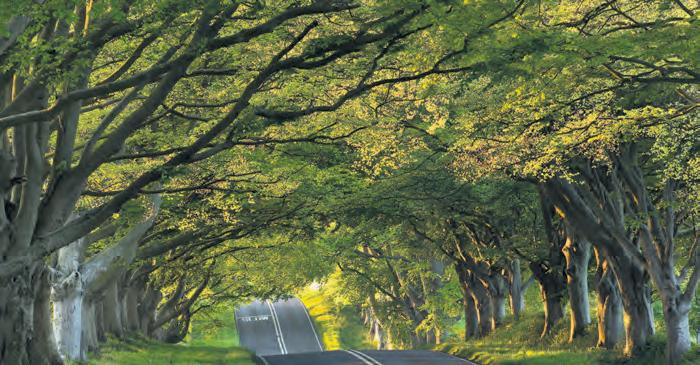



■
■
■
Mark Preston Landscape Design
Email: mark.preston88@googlemail.com
Contact Mark on: 07889 763578

Whether you desire a contemporary space, an urban courtyard or a traditional country garden, Mark can help you achieve your dream garden. Each project is tailored to your individual requirements, styles and tastes. Small or large scale projects undertaken.
Other services he can help you with include:
• Plant supply and planting service
• Discharge of planning conditions
• Garden adaptations or reorganizing
• General garden advice and help
To discuss your requirements please contact him for a free initial consultation
With the school summer holidays inching closer, parents up and down the country are likely to be feeling a mixture of excitement and panic in anticipation of the long summer holiday. If you’re in need of some inspiration to help fill those long hazy days (and prize the kids away from the iPad for a couple of hours) help is at hand.
The National Garden Scheme gives visitors unique access to over 3,500 exceptional private gardens across the country and raises impressive amounts of money for charities including Macmillan Cancer Support. Over the last 40 years an incredible £19 million has been raised for Macmillan from garden visits, funding more than 150 Macmillan nurses and other professionals.
Children under 16 go free in most gardens and, as well as serving delicious tea and cake, some have special feature for youngsters so visiting a garden can be a great adventure for all ages.
So why not inspire your little adventurers to learn about nature and support Macmillan this summer with a visit to a National Garden Scheme garden. To help, there’s a list of the best gardens to visit with kids during the summer holidays. The list is a national one and takes into account that families will be on holiday throughout August and looking perhaps for something different to do.
Extensive country house gardens with formal terraces, walled topiary garden, enclosed cut flower garden and large glasshouse. There’s also a large chicken enclosure, rescue ponies and donkeys. Open 8th, 15th and 29thAugust.
–
Charming 10-acre garden with lawns, lakes and ponds, set in beautiful countryside in the heart of Devon. See water features with swans, ducks and other wildlife, or try the novelty crazy golf. Stroll down Nursery avenue where you’ll find amazing works of art from Humpty Dumpty to Little Miss Muffet! Open 28th July, 11th, 25th and 26th August.
BARNARDS FARM, ESSEX
There’s so much to explore! Climb
the Belvedere for the wider view and take the miniature railway train for a woodland adventure. There are summer beds and borders, ponds, lakes and streams. There’s also a ‘Japanese garden’ plus sculptures grand and quirky that enhance and delight. Opens every Thursday during the school holidays –pre-booking essential.
Family-friendly Laskey Farm offers a treasure hunt, treehouse and a mini menagerie with chickens, guinea fowl and guinea pigs. The gardens feature a network of pools accommodating both Koi fish and terrapins, creating an interconnected water garden which includes a swimming pond. There’s also a grass maze. Open 25th and 26th August.
The main garden has a roofed pergola with clematis growing around it and a raised pond. The Chinese garden laid with gravel has two water features, stone dragons and buddha. There is a working miniature railway in the garden shed. The churchyard contains a wildlife pond, colourful herbaceous borders and a fairy house for children. Open 4th and 5th August.
A blaze of colourful displays with quirky surprises at every turn. Sculptures, garden art, chickens, lots of seating and stairs to a viewing platform. There’s a free Treasure Trail with prizes for all children. Open 3rd and 4thAugust
Explore 15 acres of gardens, woodlands and lakeside walks. The informal woodland and arboretum are perfect places for children to explore and enjoy a new ‘Nature Spy’ activity trail. The gardens are also home to an 18th century ice well and an early 19th century glass house – one of only three of its type in the country. Open 18thAugust Since 1984, the National Garden Scheme has donated over £19 million, funding care units in Bristol and Chesterfield as well as funding 150 Macmillan nurses and other vital healthcare professionals inspiring more people to visit gardens to enjoy the sense of wellbeing a beautiful outdoor space can bring.
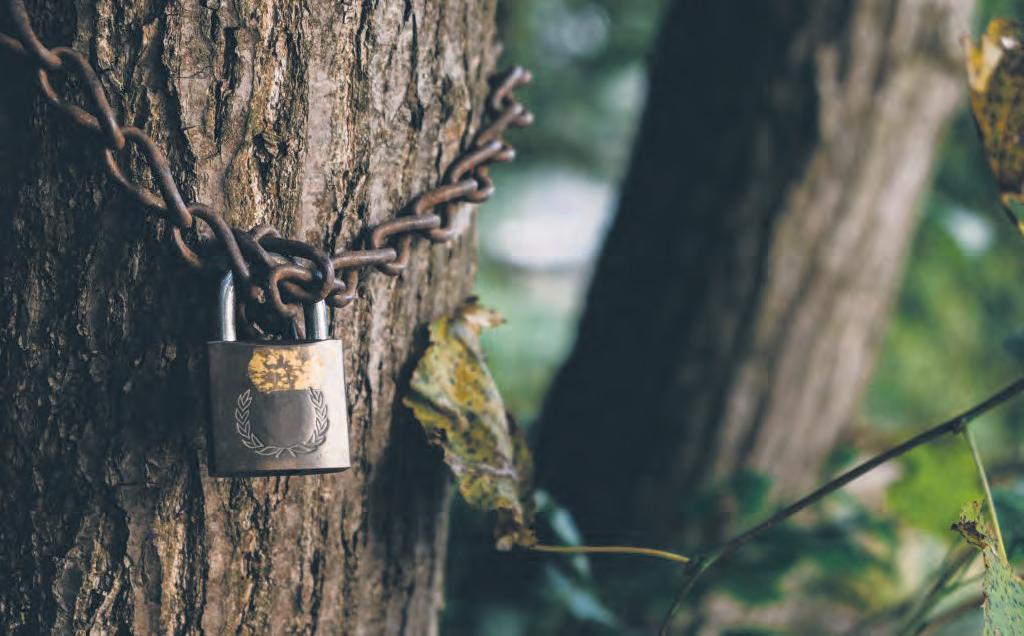
Tree Preservation Orders are an important tool for the preservation of our environment, particularly our urban one. Over the many years I have been doing this job, I have met very few people who do not support the concept that important trees in the urban environment need to be protected and retained.
However, a Tree Preservation Order is a pretty heavyweight piece of legislation to suddenly crash down through your letterbox and land on the doormat. In an instant those trees in your garden which you thought were yours seem to belong to somebody else, somebody to whom you have to go cap in hand if you wish to give your trees so much as a hard stare!
Still, you would have thought that your local authority would understand the heavyhanded nature of the serving of a Tree Preservation Order and would go to whatever lengths are reasonable to ensure the whole process is fair and equitable. You would have thought that, wouldn’t you?
“Ah hah!”, I hear you cry, “There is a right to object”. Yes, there is – and who deals with your carefully worded and finely crafted objection to the Tree Preservation Order? The very same local authority that made the order in the first place. Thirtyseven years ago, when I was a local authority tree officer, all objections to Tree Preservation Orders were heard by a committee of local councillors. Recently I have seen objections being dealt with under delegated powers by the actual officer who made the order – so good luck with that!
But your Council Tax is paying for highly skilled experienced Arboriculturists to make these decisions – so all will be well, won’t it? This year I saw a Tree Preservation Order placed upon a ‘Cypress Tree’. The tree was reasonably prominent and contributed to the area it was in, so the order was fair enough –
Editorial
Publisher & Editor: Alan Lewis
alan@countrygardener.co.uk
Tel: 01823 431767
Time Off
Kate Lewis timeoff@countrygardener.co.uk
Advertising Sales
the only trouble was that it wasn’t a cypress; it was an Incense Cedar. I must admit that from the closest image you could find on Google street view, it did look like a cypress. But they would not be so casual as to not even properly inspect the tree before making a Tree Preservation Order… would they?
Anyway, you can always apply under the Tree Preservation Order to have works done to what used to be your tree. They must take them seriously, mustn’t they? We have current sites where we have put in reports regarding trees covered by Tree Preservation Orders. Objections have come back from a tree officer with helpful photos in the text to show us where we are going wrong. Helpful photos grabbed off Google Earth and five years out of date. The site he is dealing with doesn’t look anything like the site we are dealing with. He doesn’t know that because he has never been to any of them. I understand the idea of people working from home, but this one seems to be working at home, or the beach, or the pub – who knows? They are not all like that. There are some very good tree officers out there genuinely trying to do their best under difficult circumstances, but there are also some who are content to give tree owners a very poor service. And if the tree falls and does serious damage, are they liable? They try not to be. They use phrases that they think will keep them off the hook like “insufficient evidence at this stage”. We will have to wait and see if that works.
Mark Hinsley, of Mark Hinsley Arboricultural Consultants Ltd, offering tree consultancy services. www.treeadvice.info
Ava Bench - Somerset & Hampshire
ava@countrygardener.co.uk
Tel: 01278 786139
Cath Pettyfer - Devon
cath.pettyfer@countrygardener.co.uk
Tel: 01837 82660
Corina Reay - Cotswolds & Dorset
corina@countrygardener.co.uk
Tel: 01823 410098
Classifieds classified@countrygardener.co.uk
Accounts and subscriptions
Heather Rose heather@countrygardener.co.uk
Design & Production
Aidan Gill
aidan@countrygardener.co.uk
Gemma Stringer
gemma@countrygardener.co.uk
Distribution & Stockists
distribution@countrygardener.co.uk

